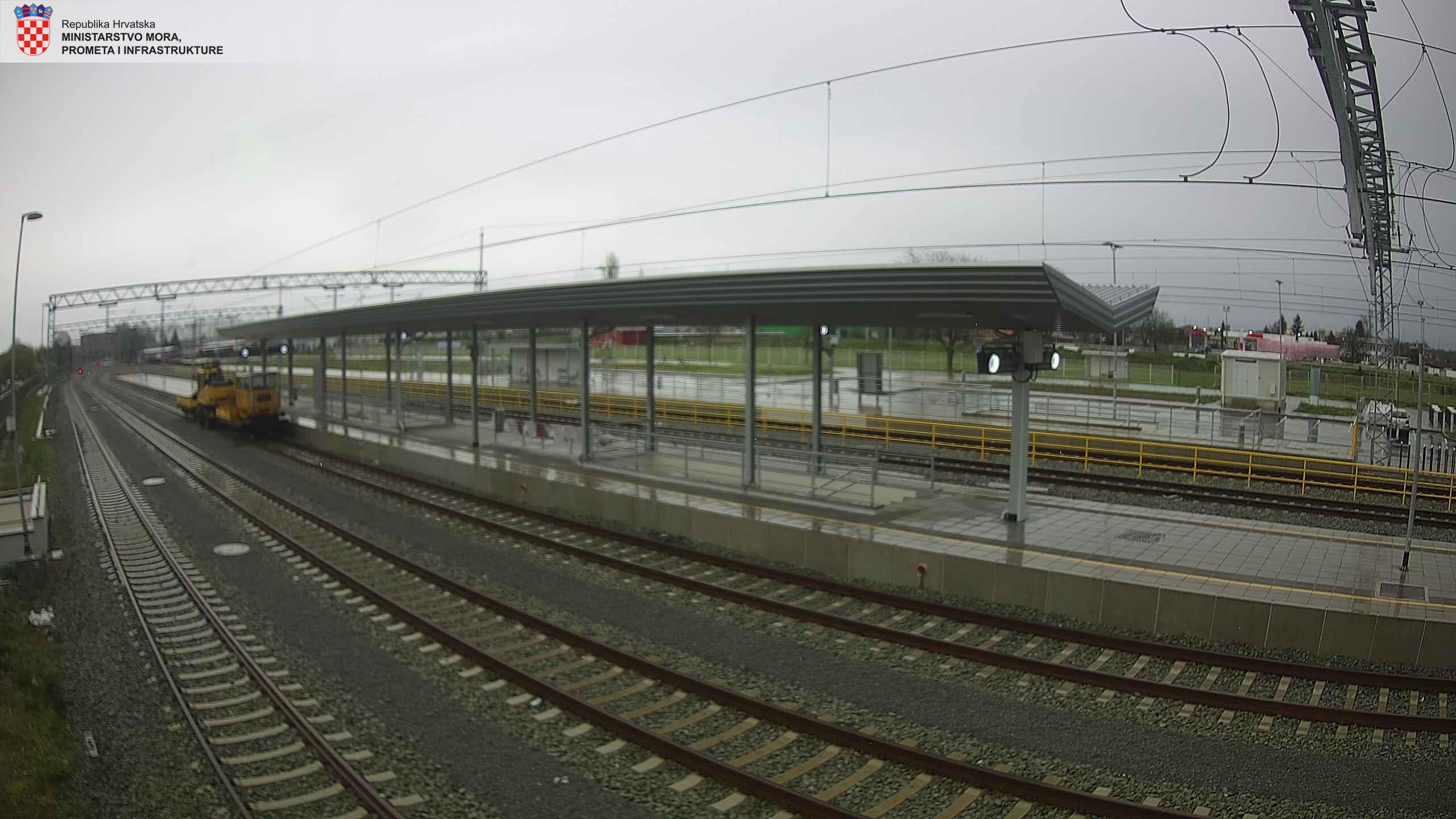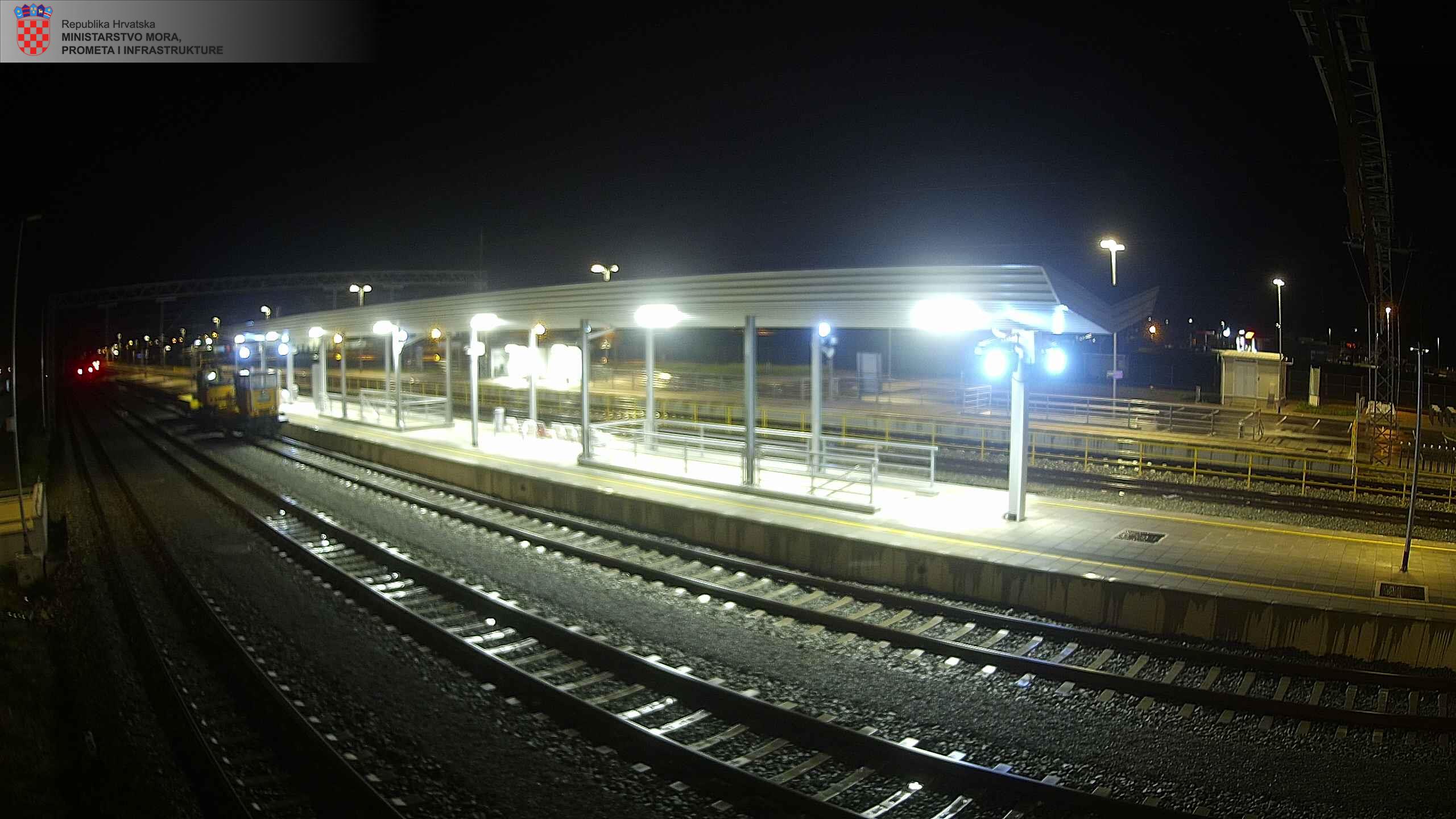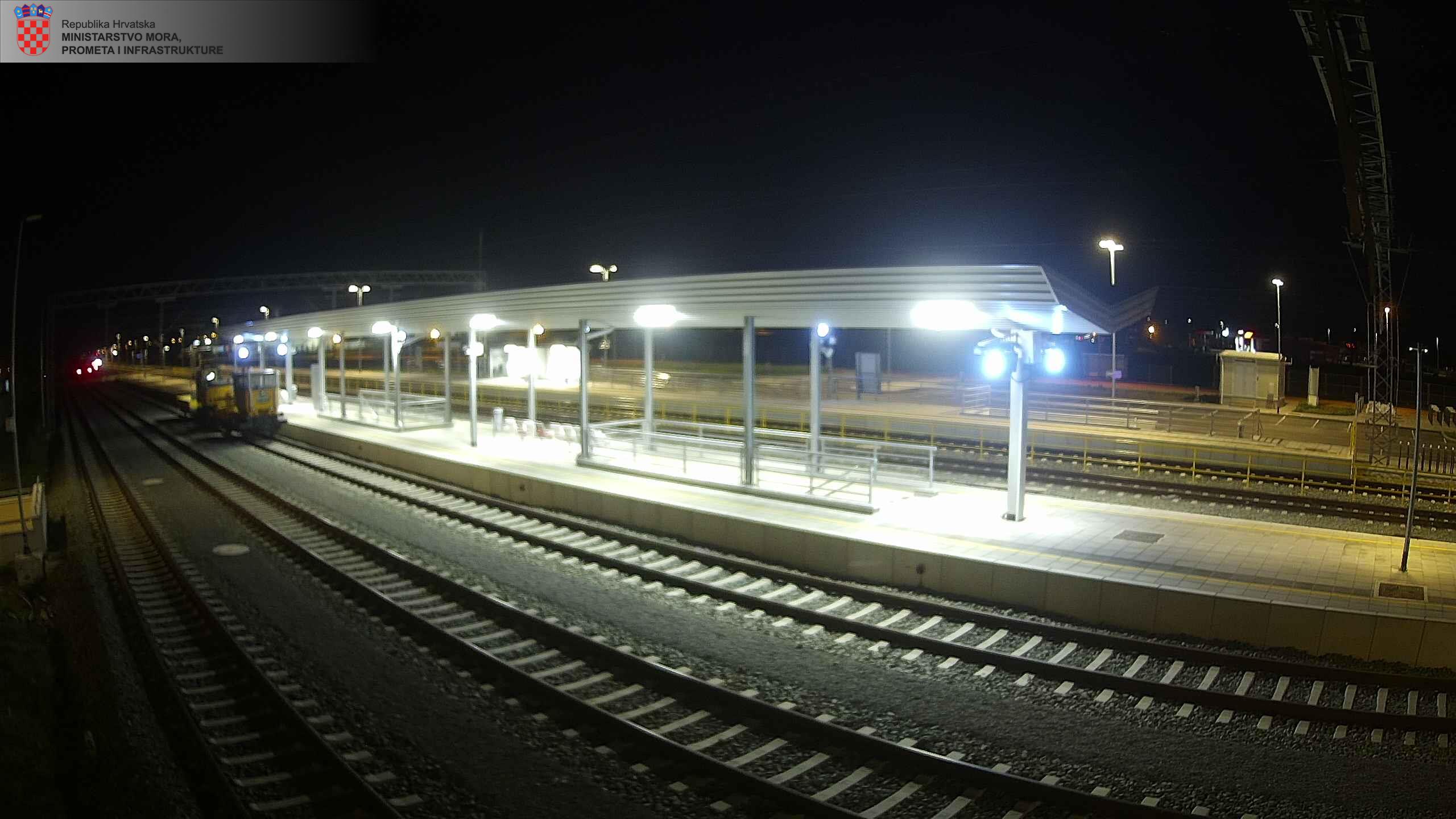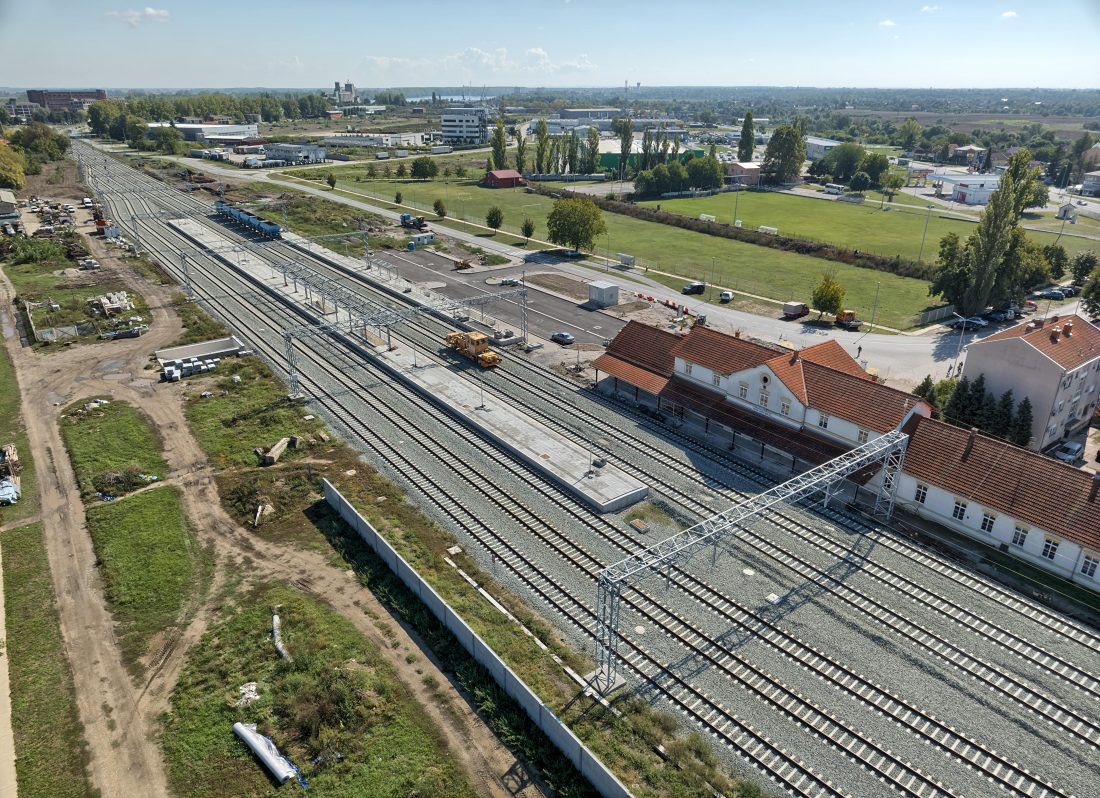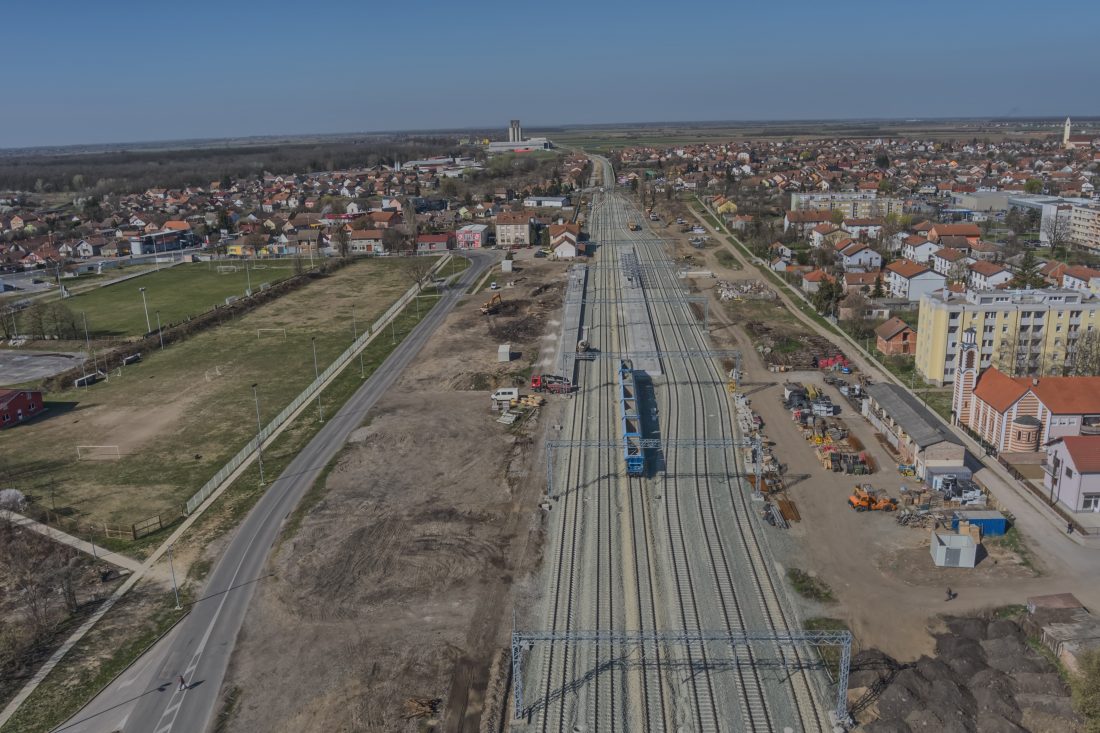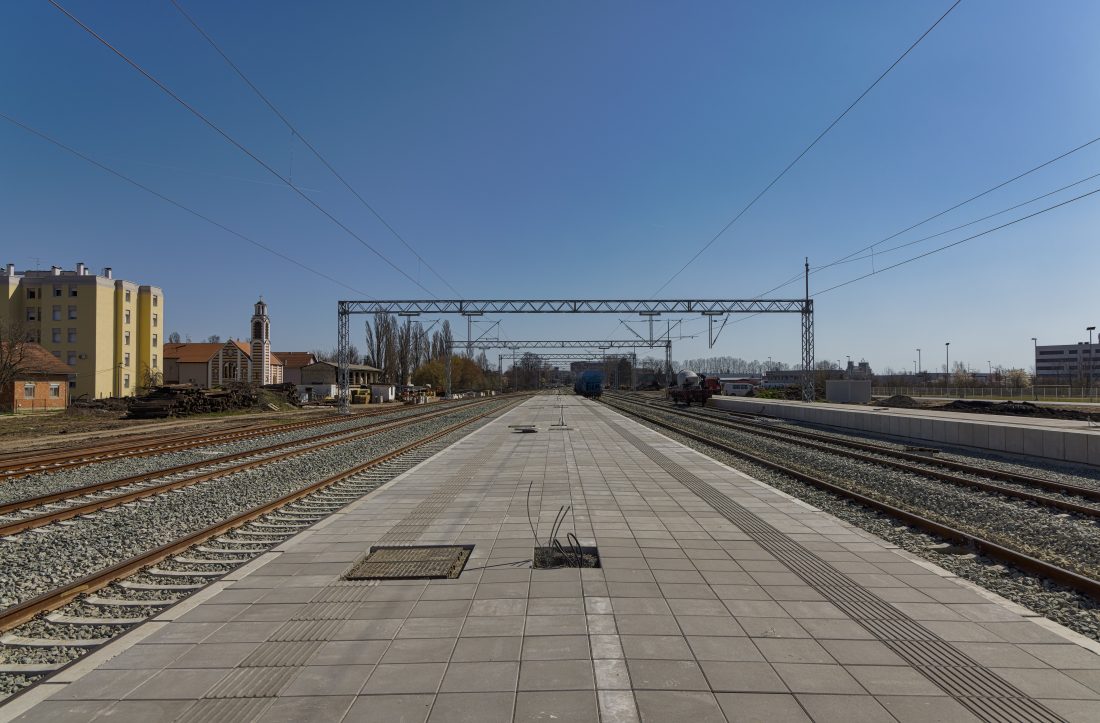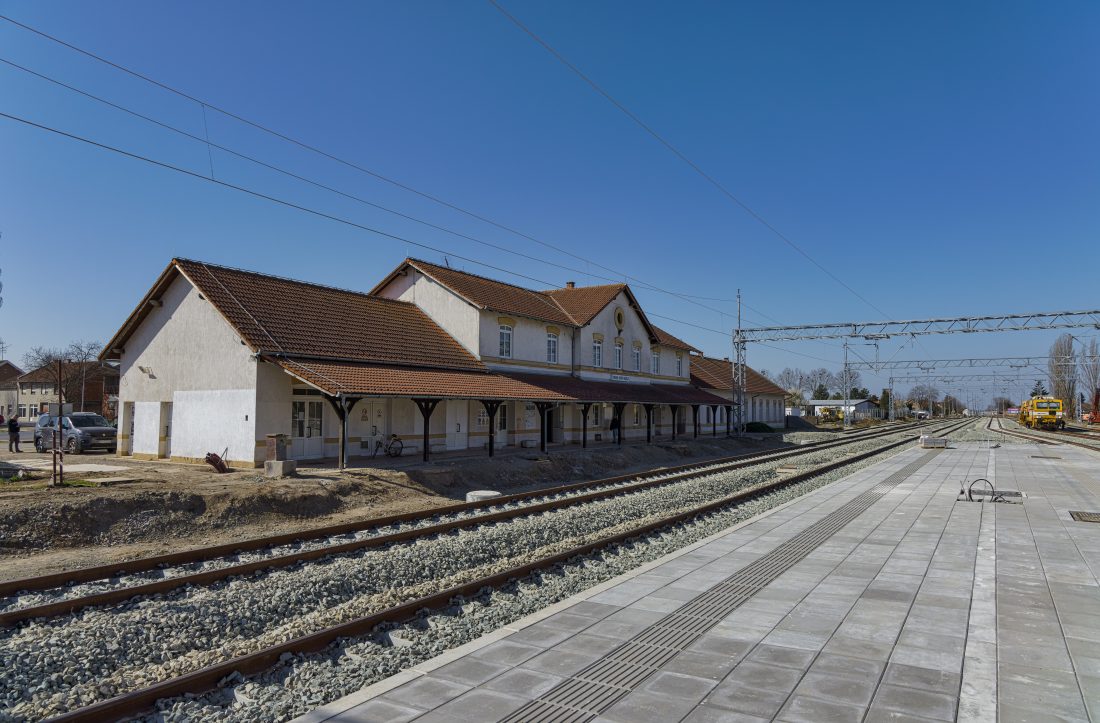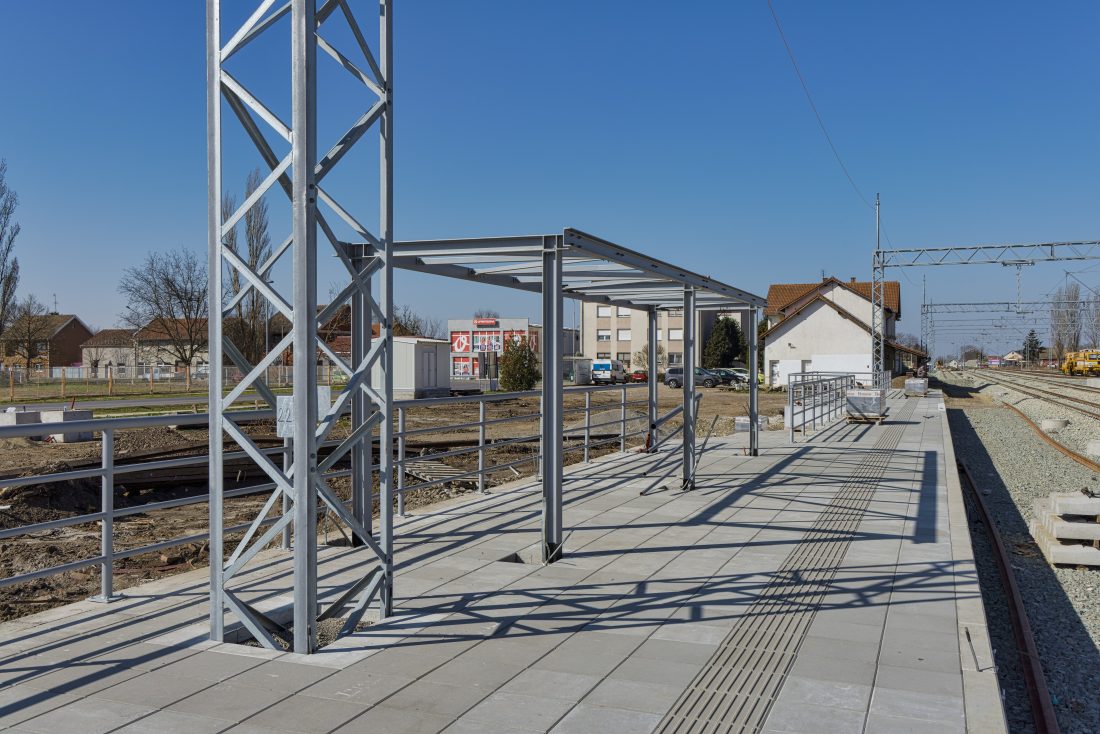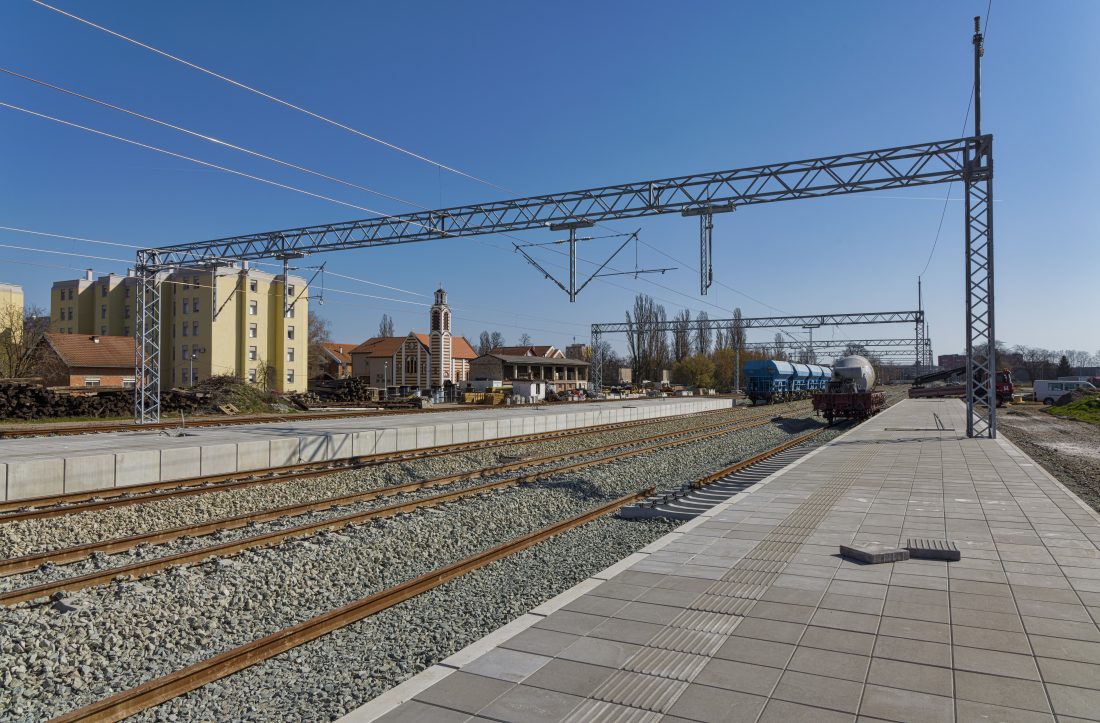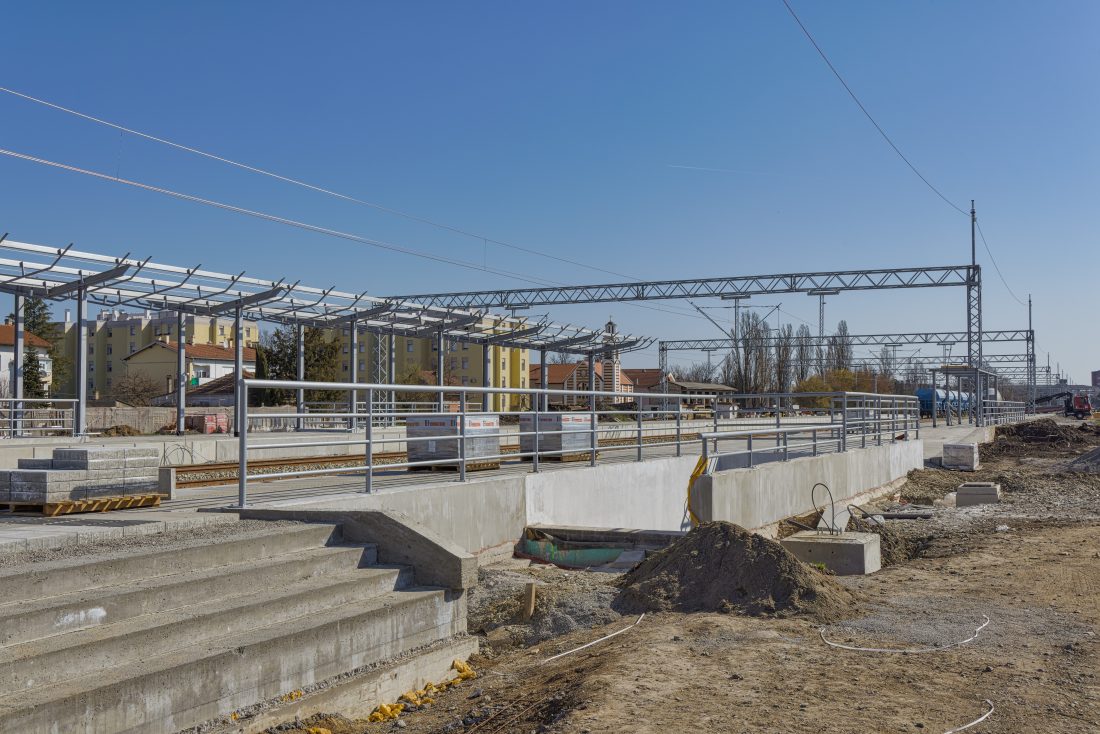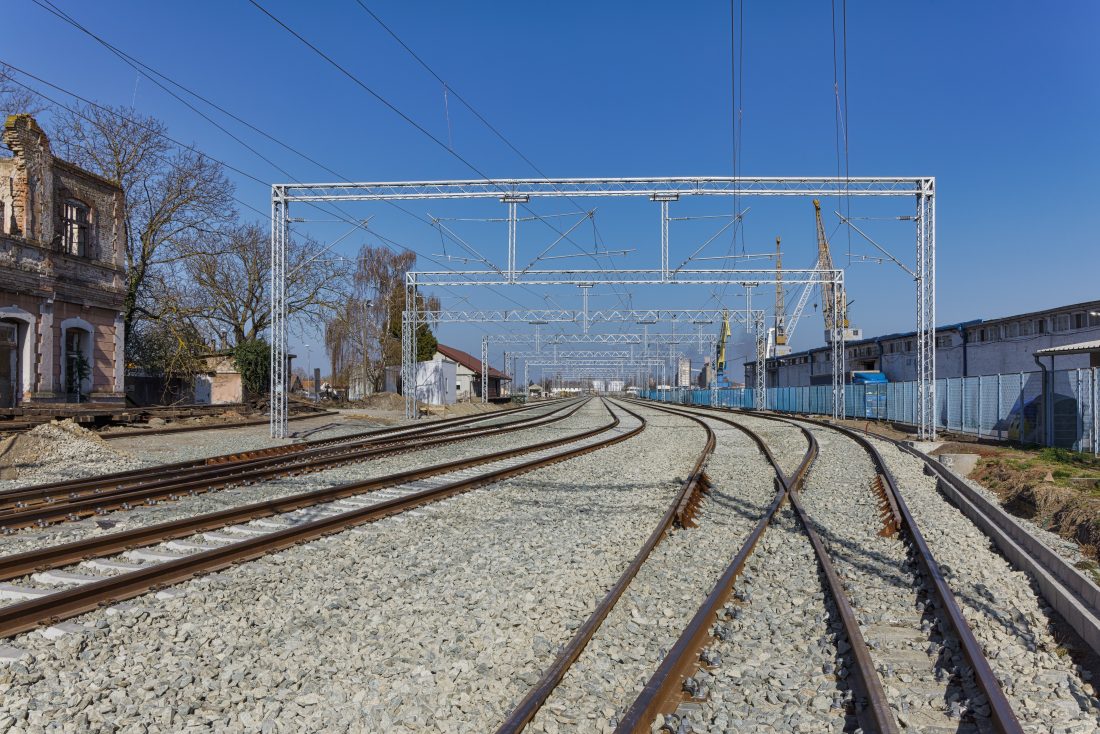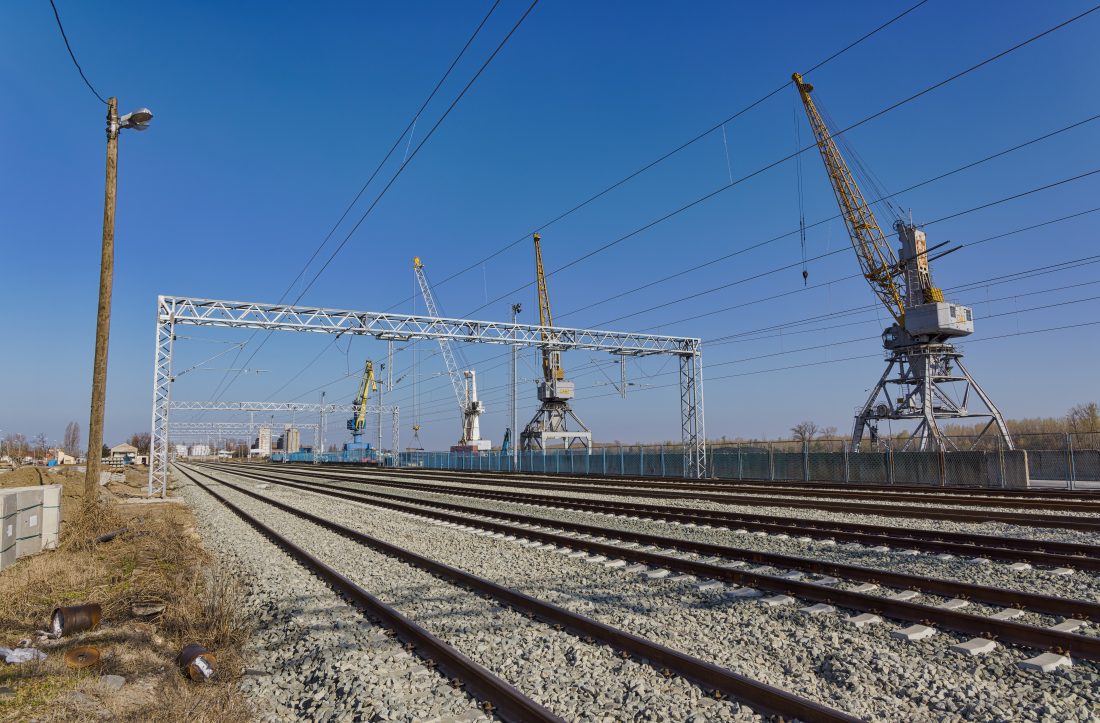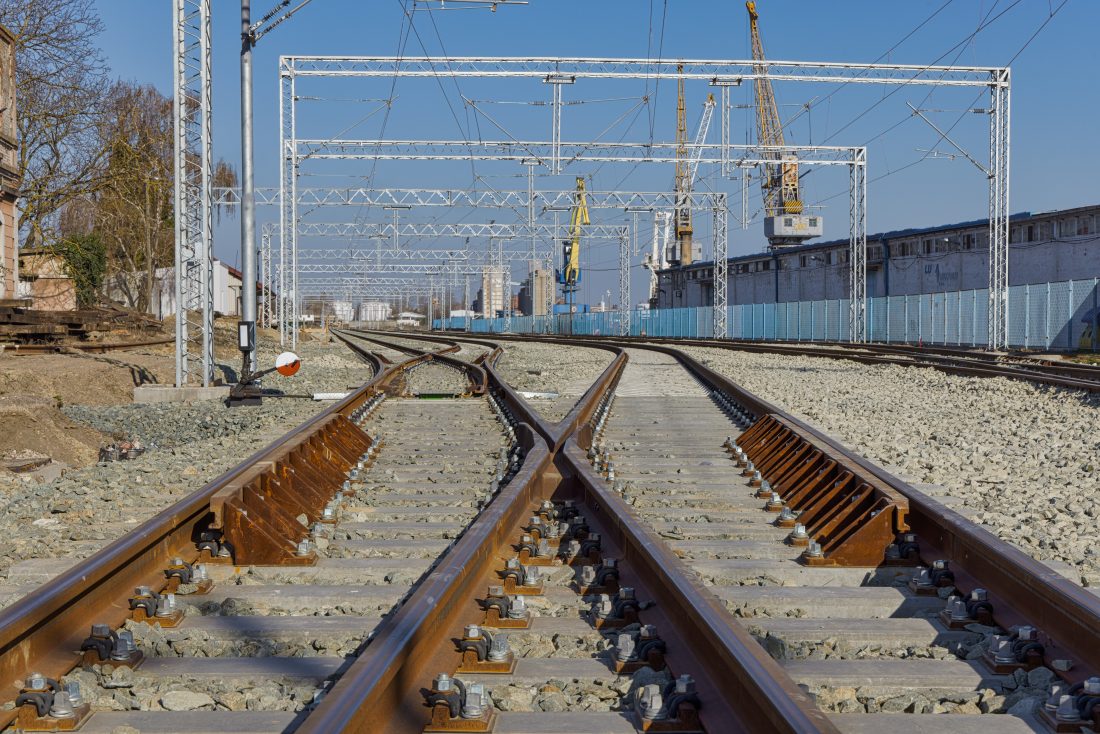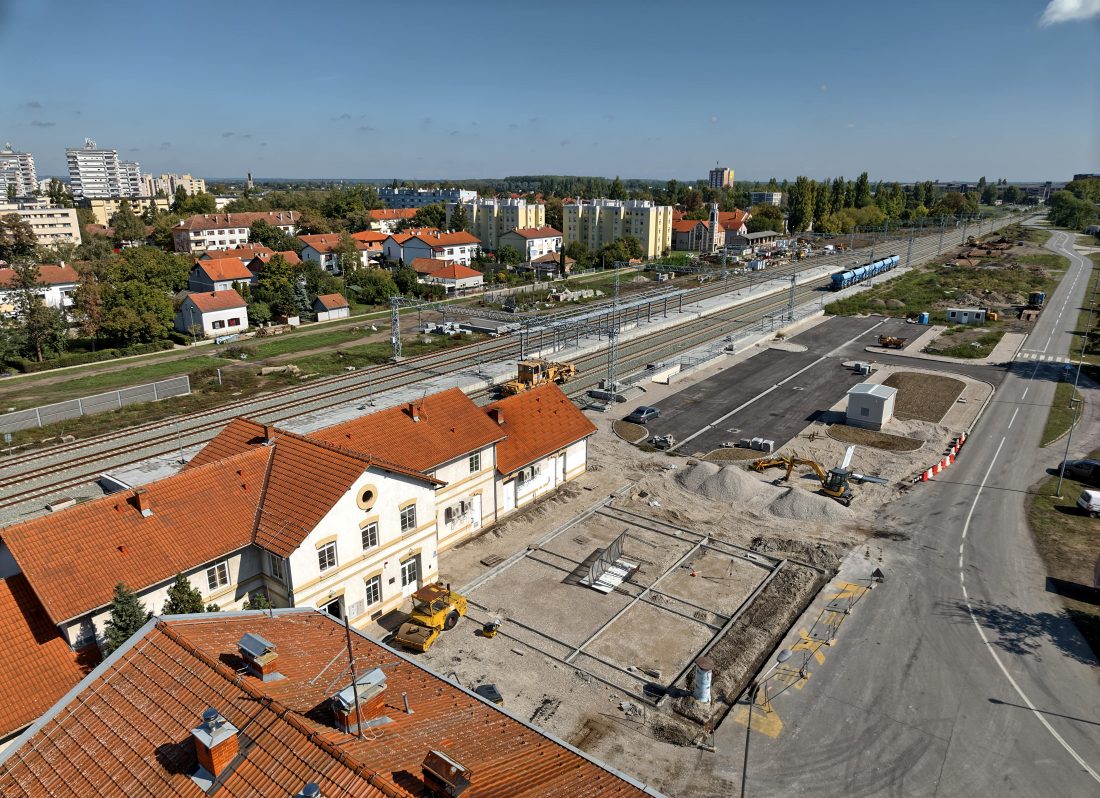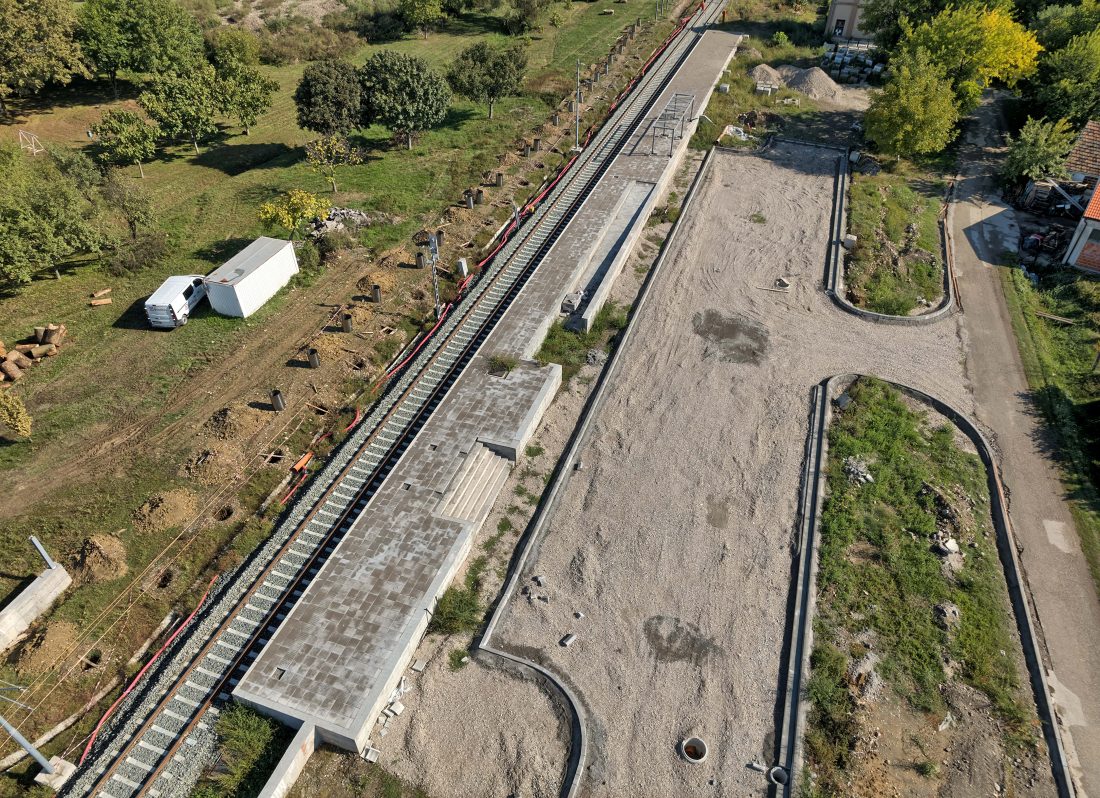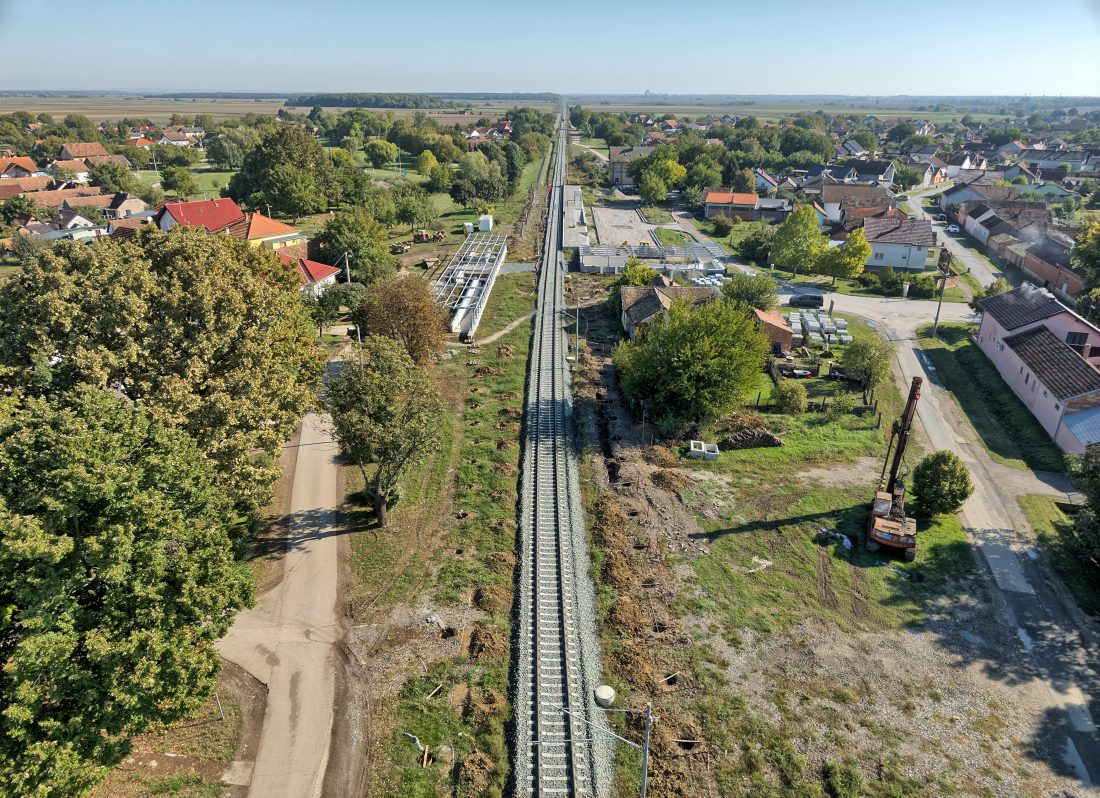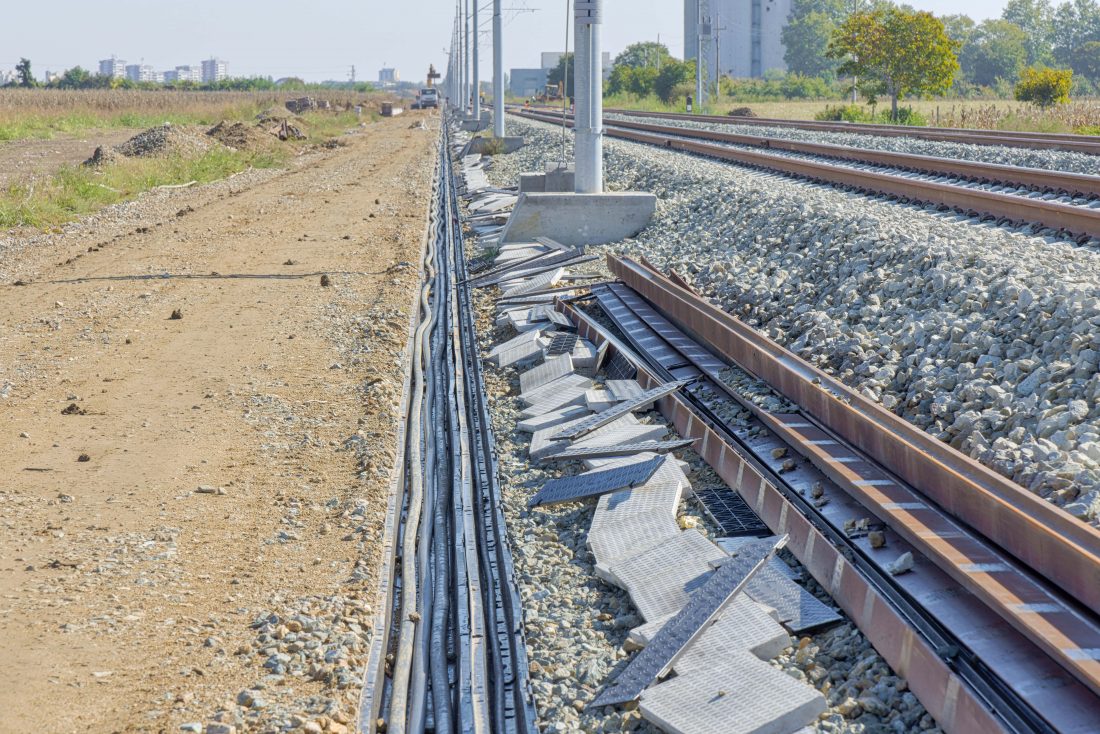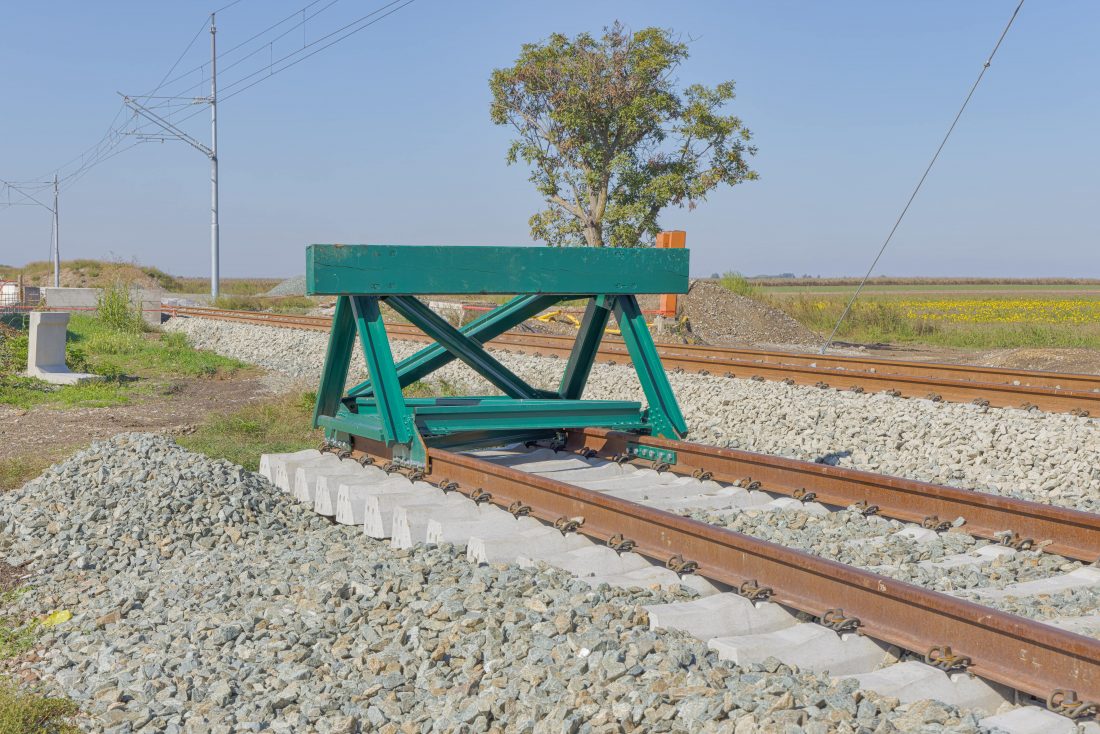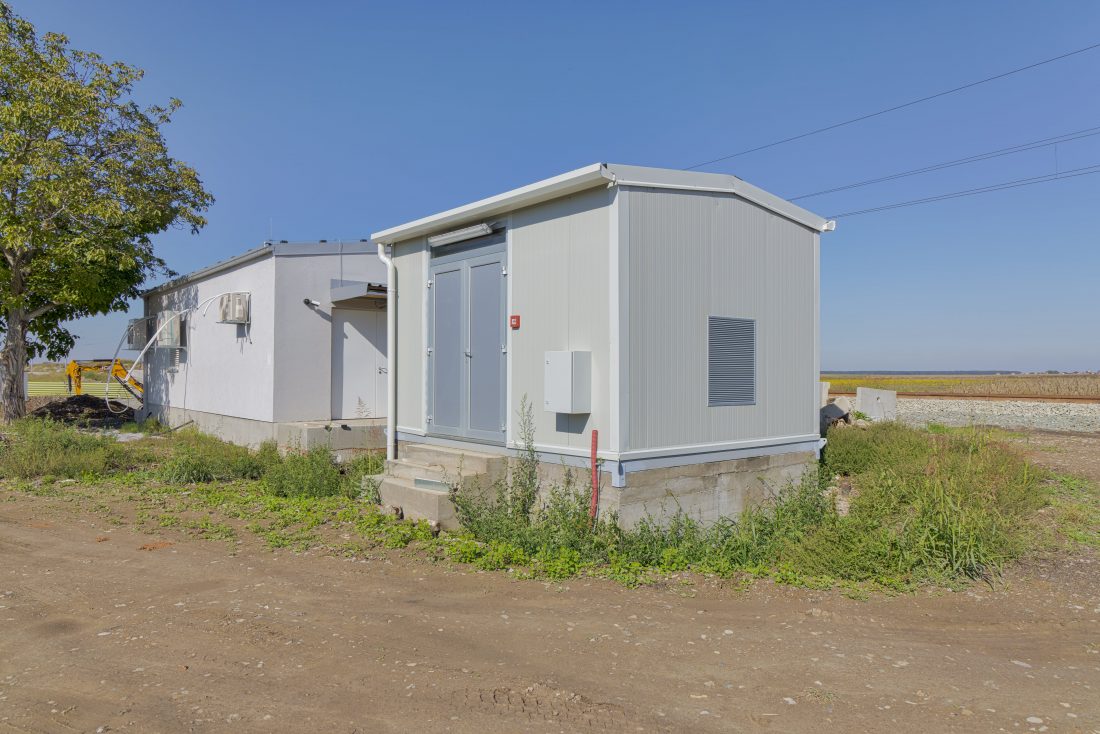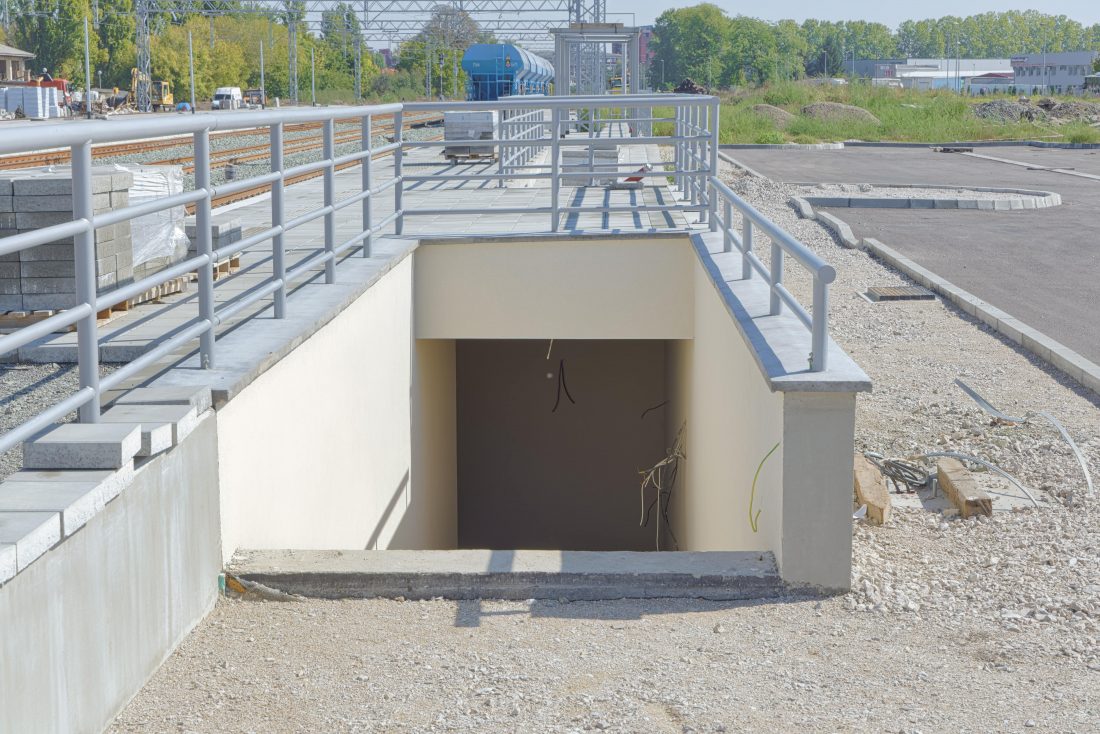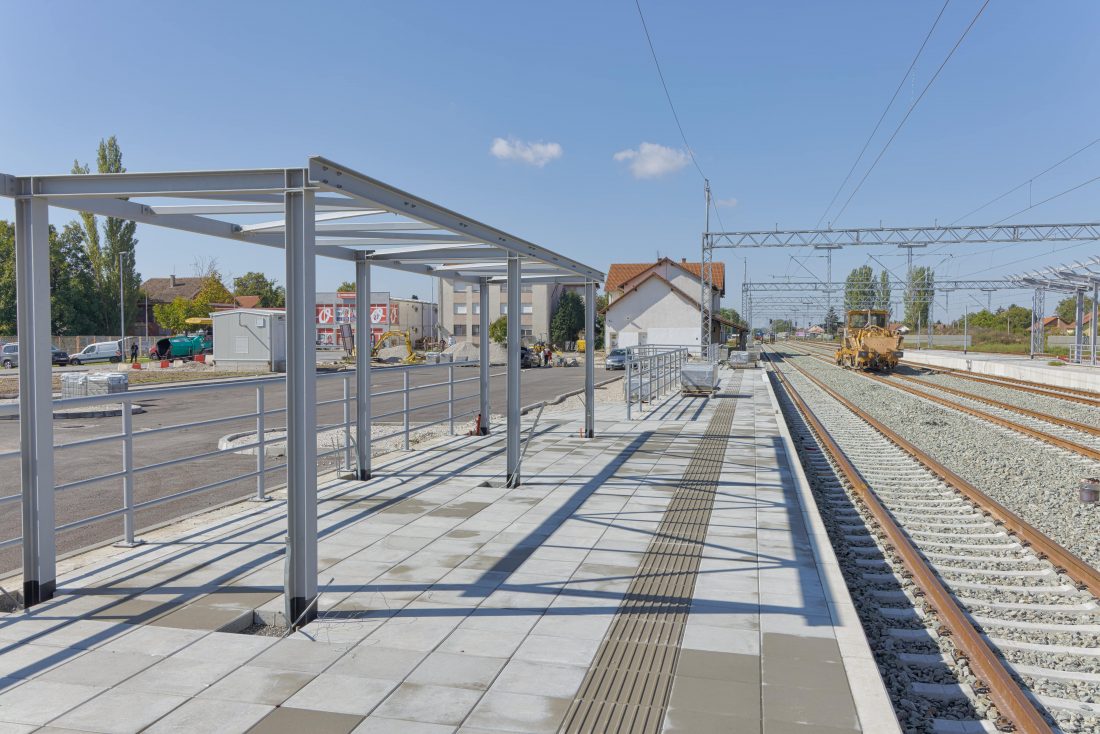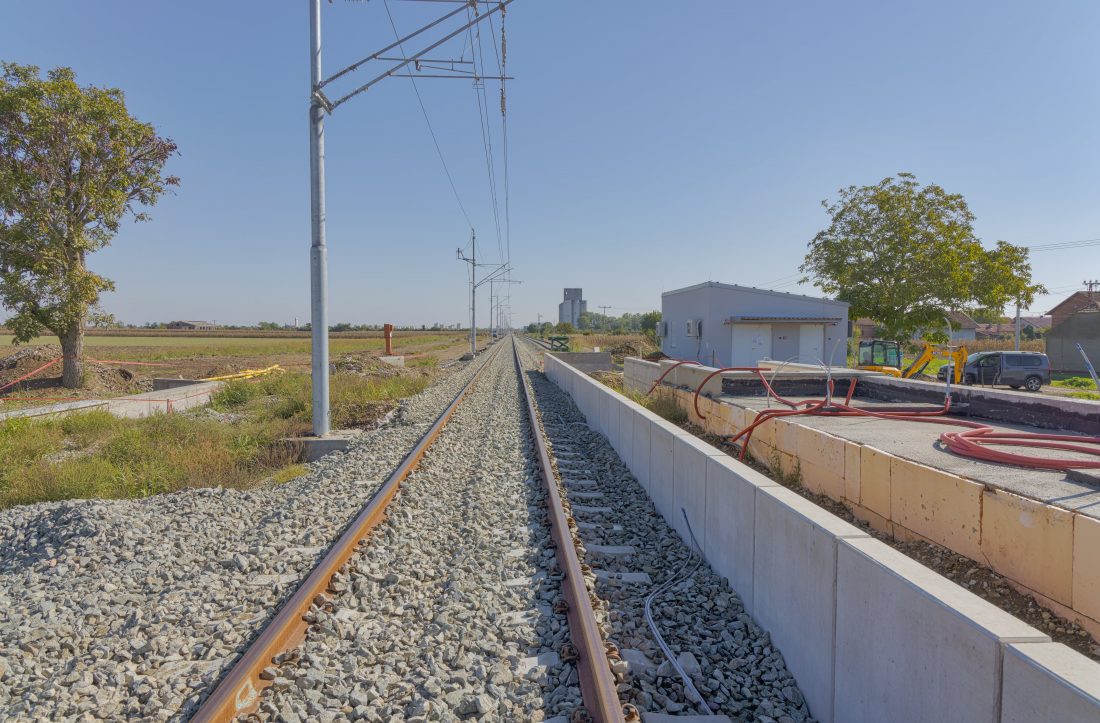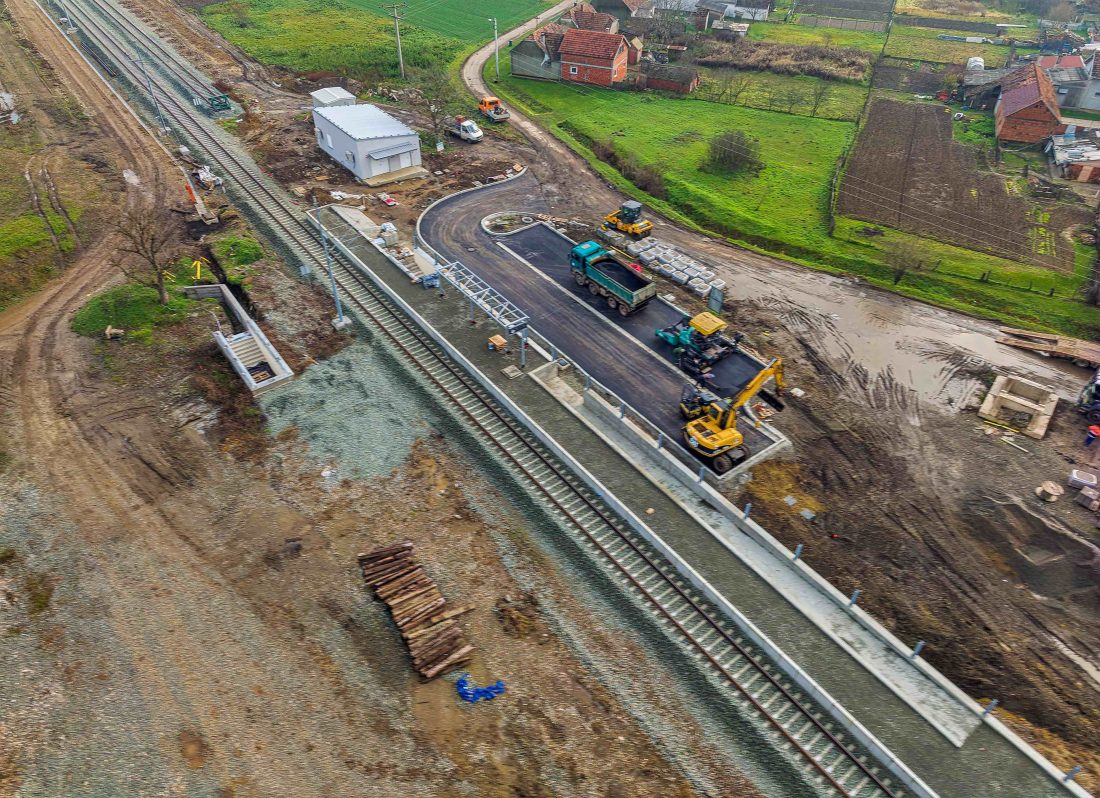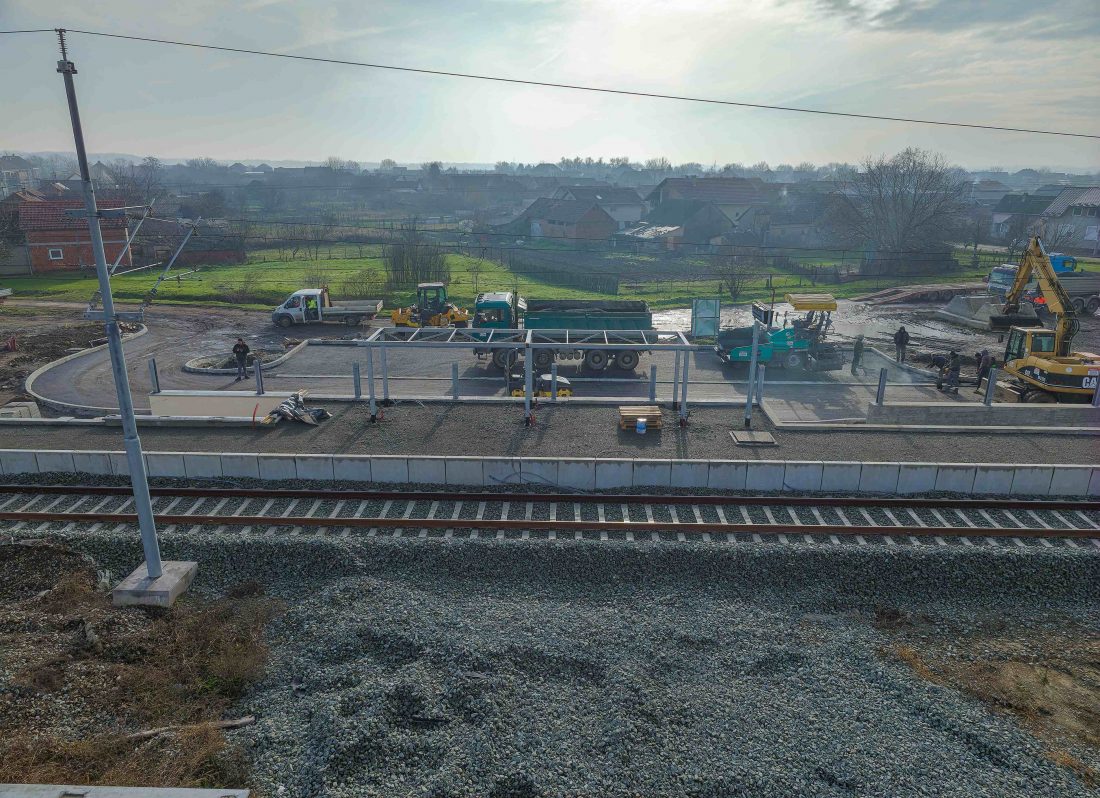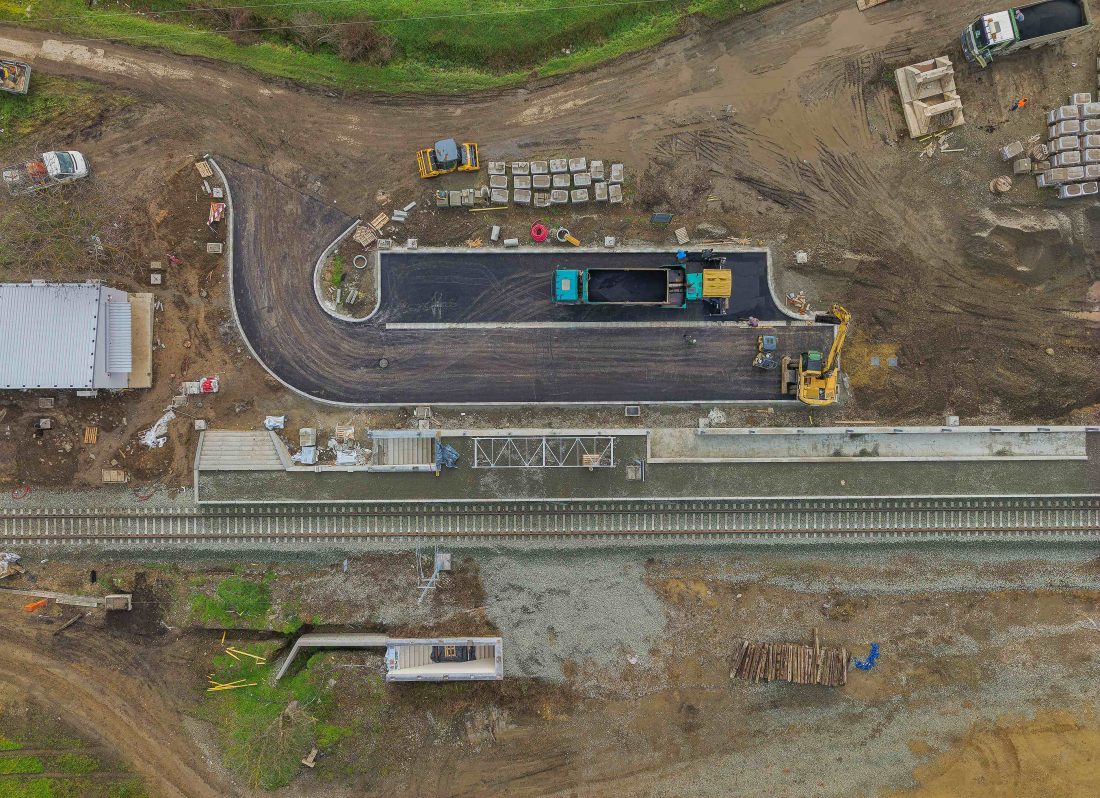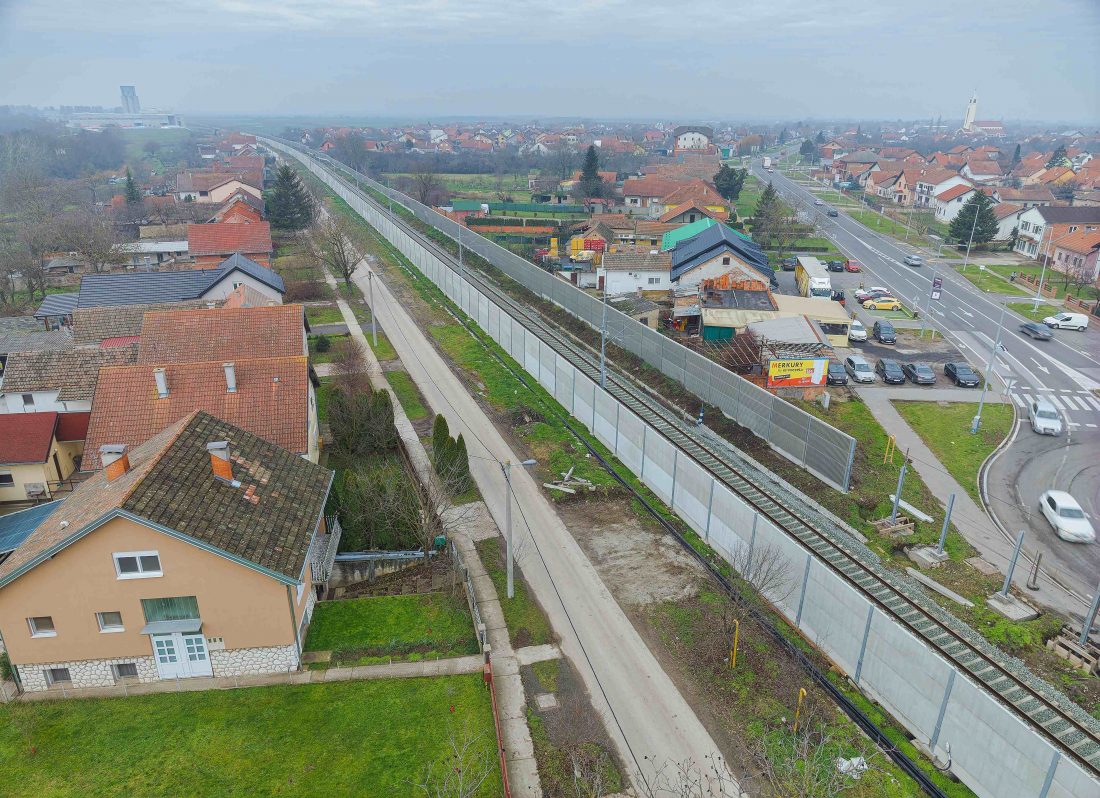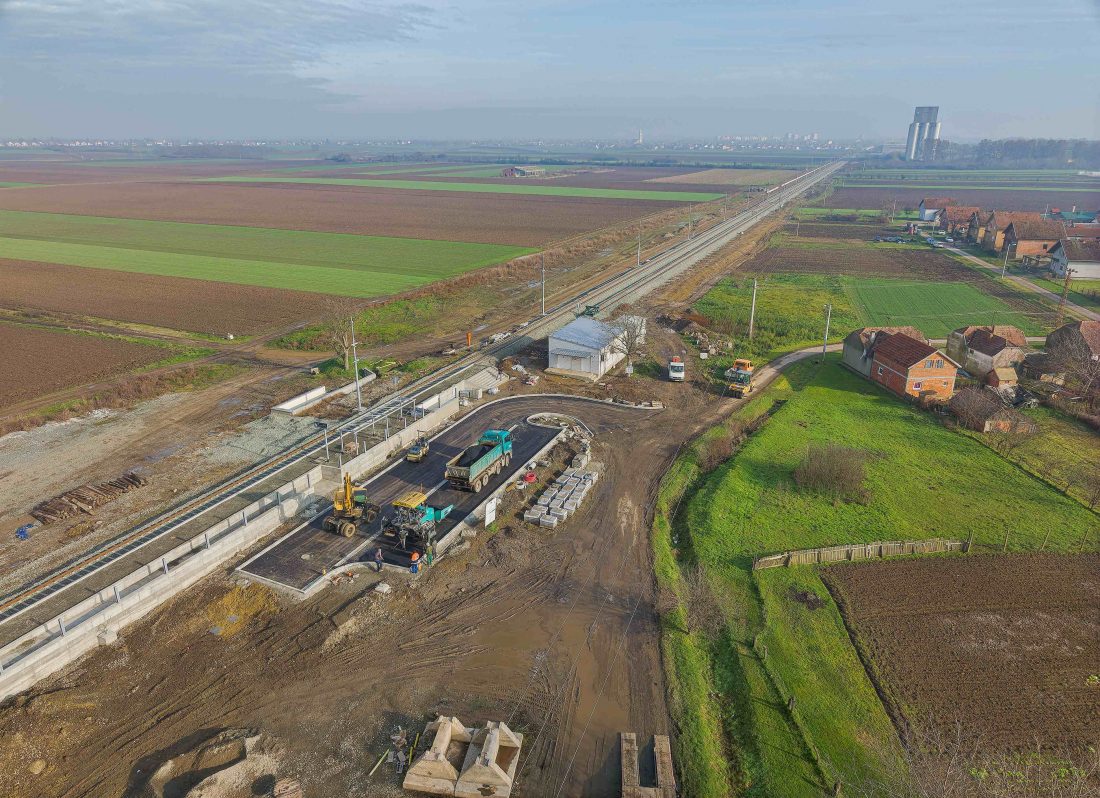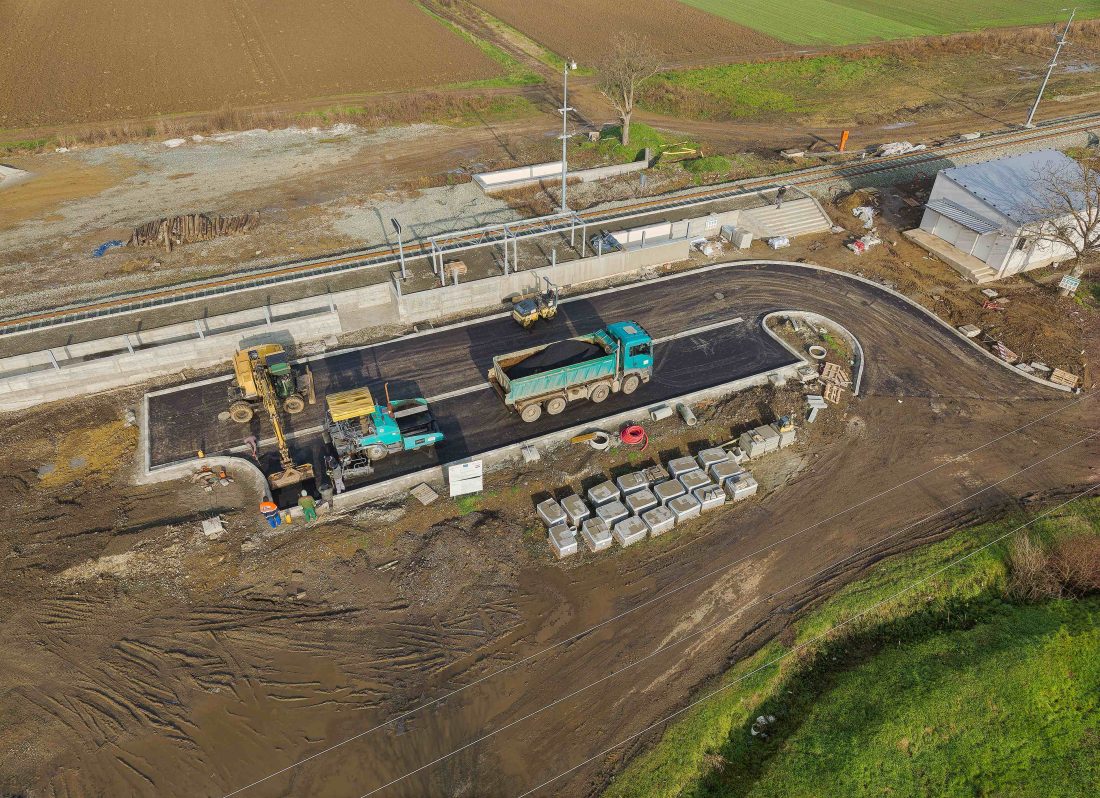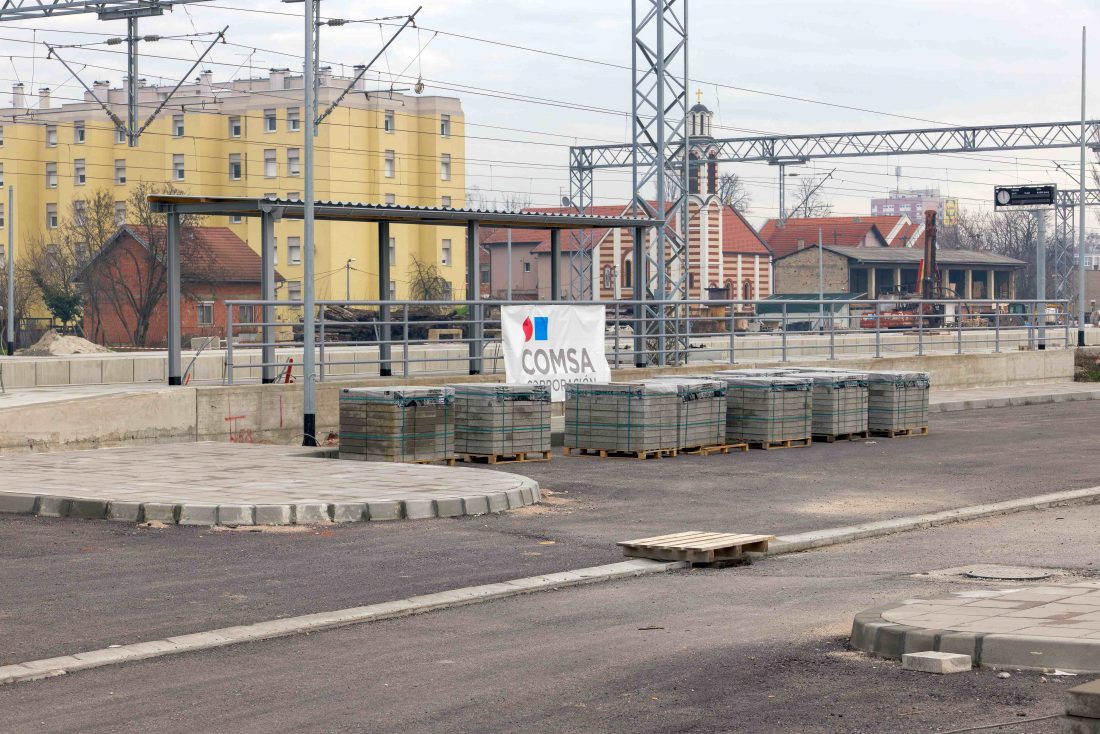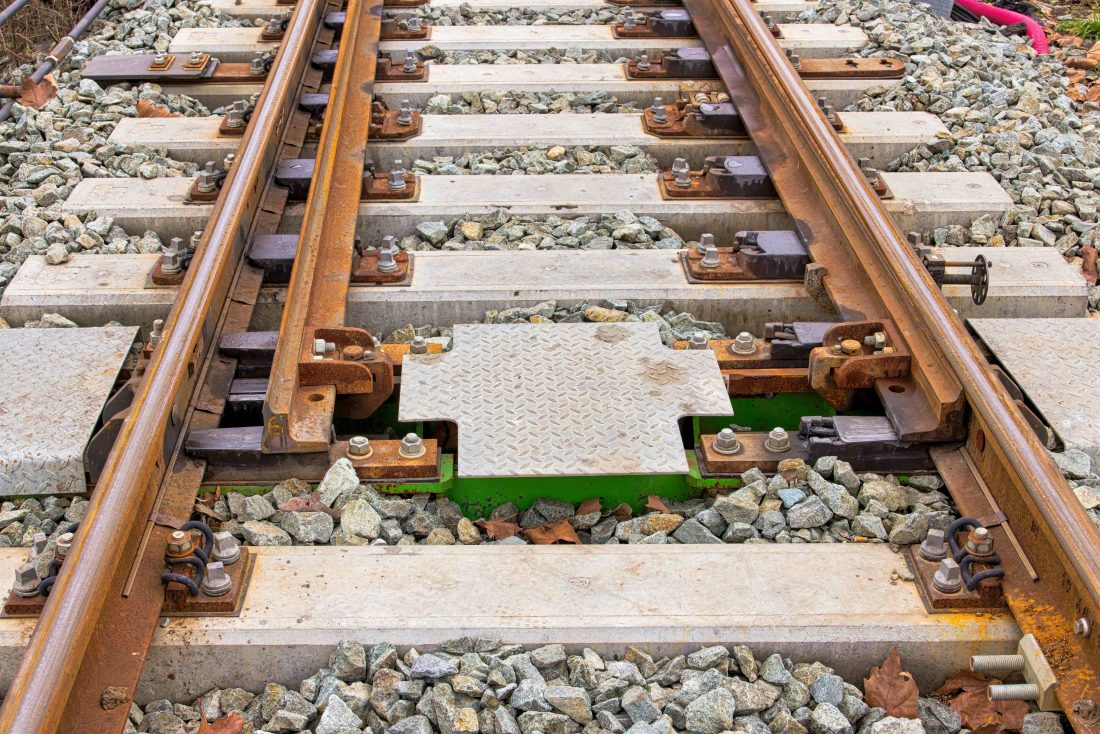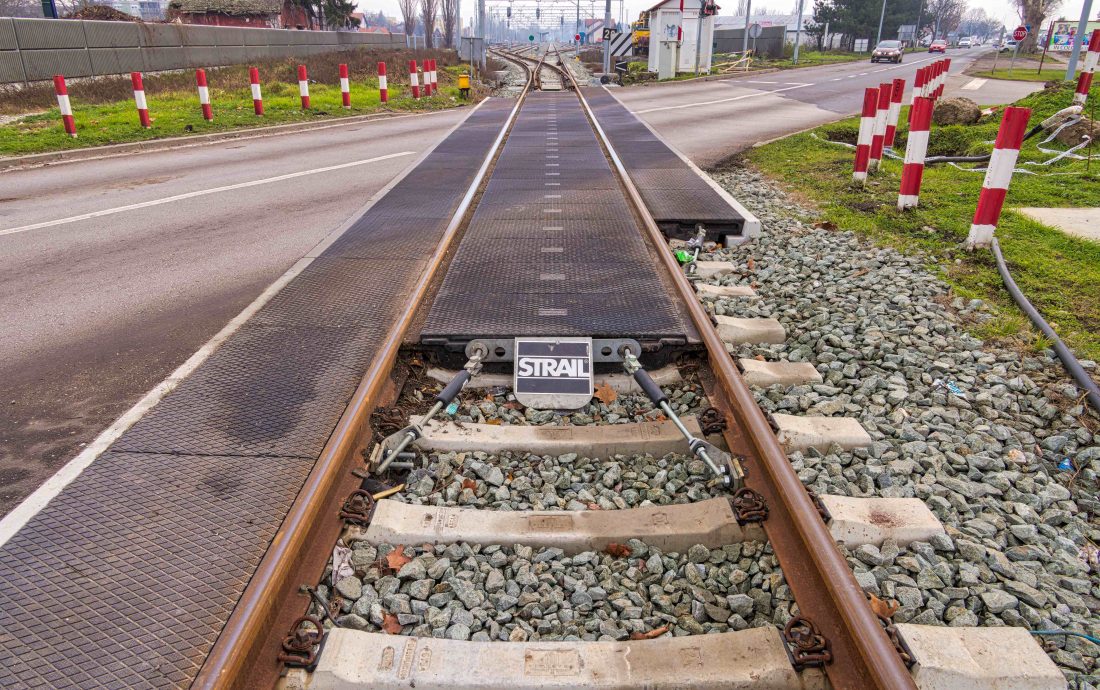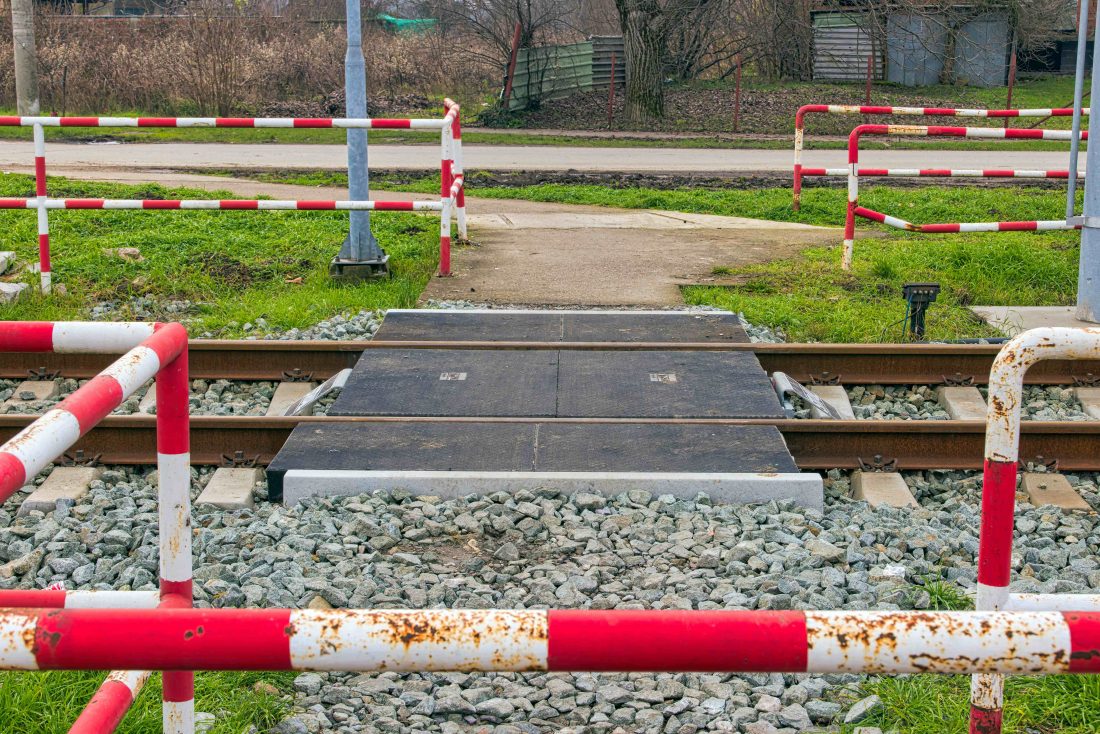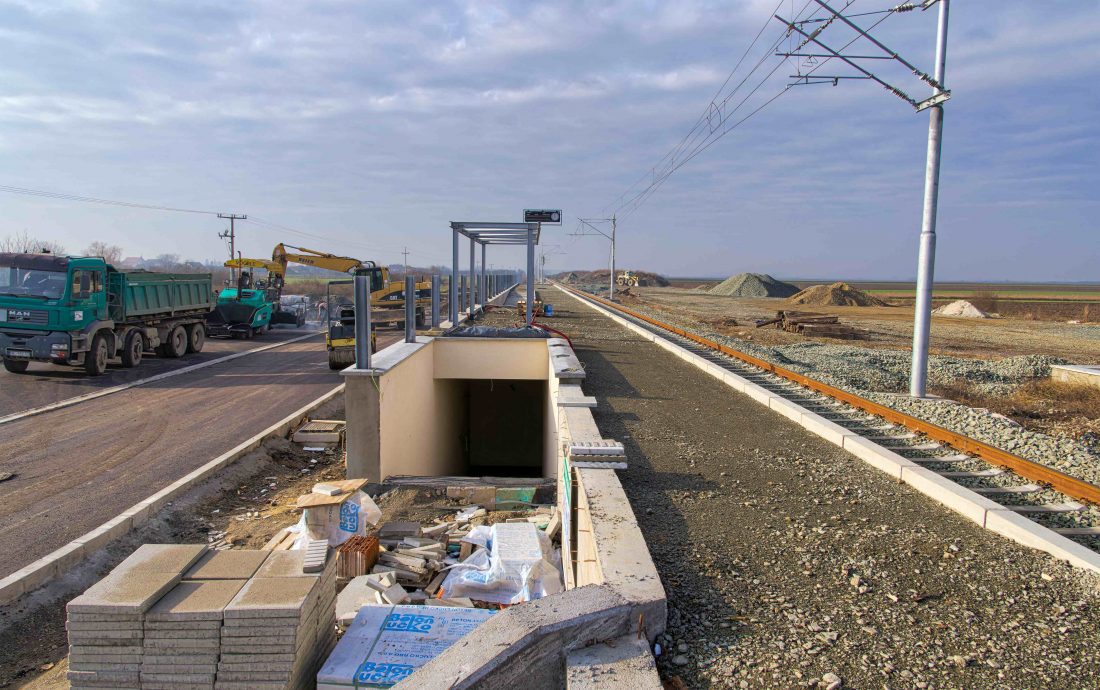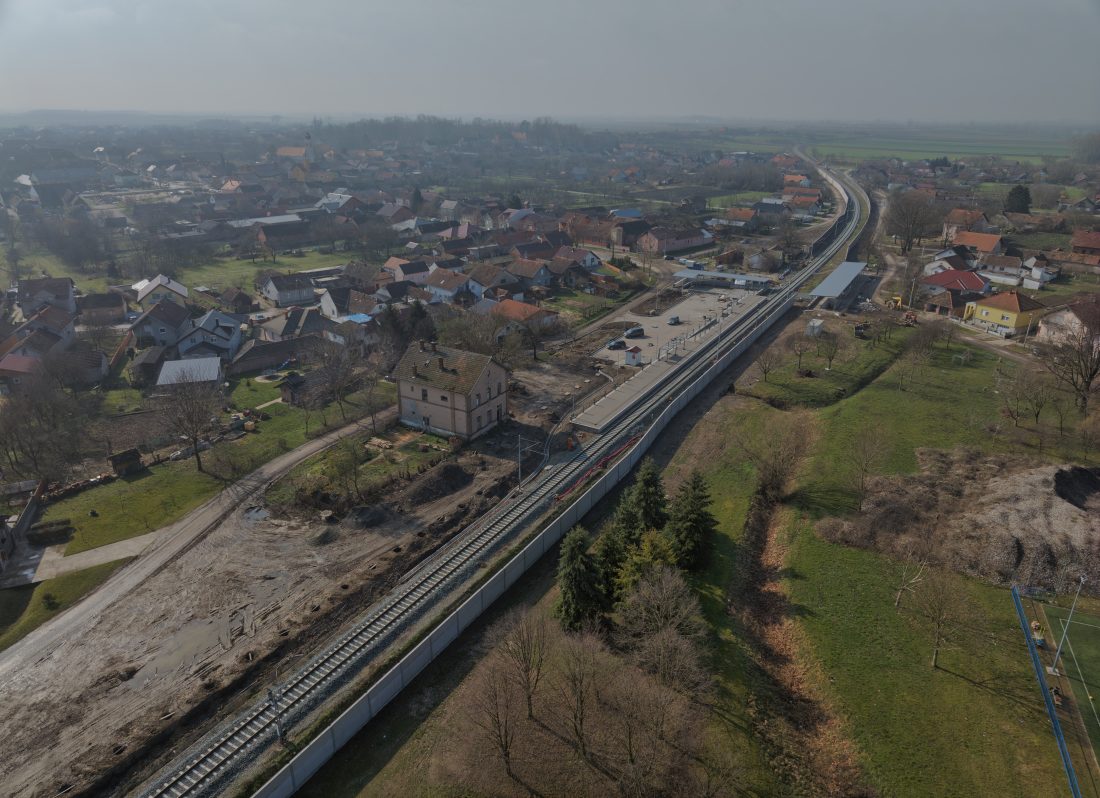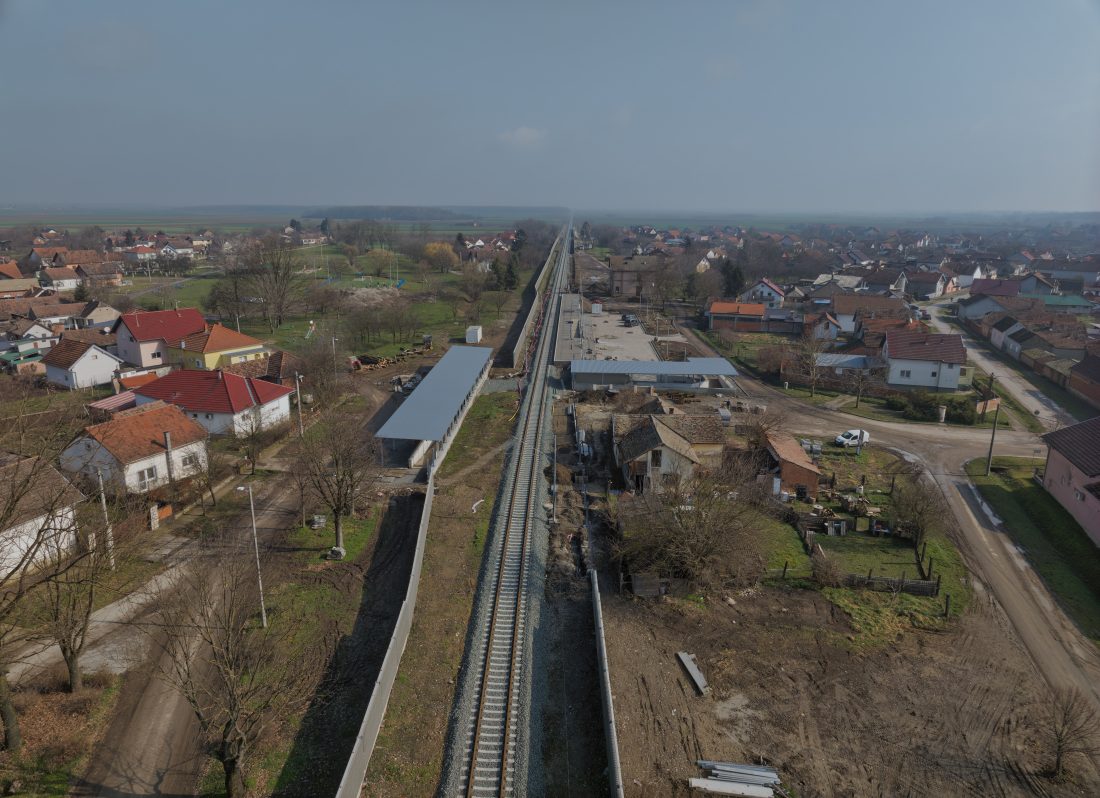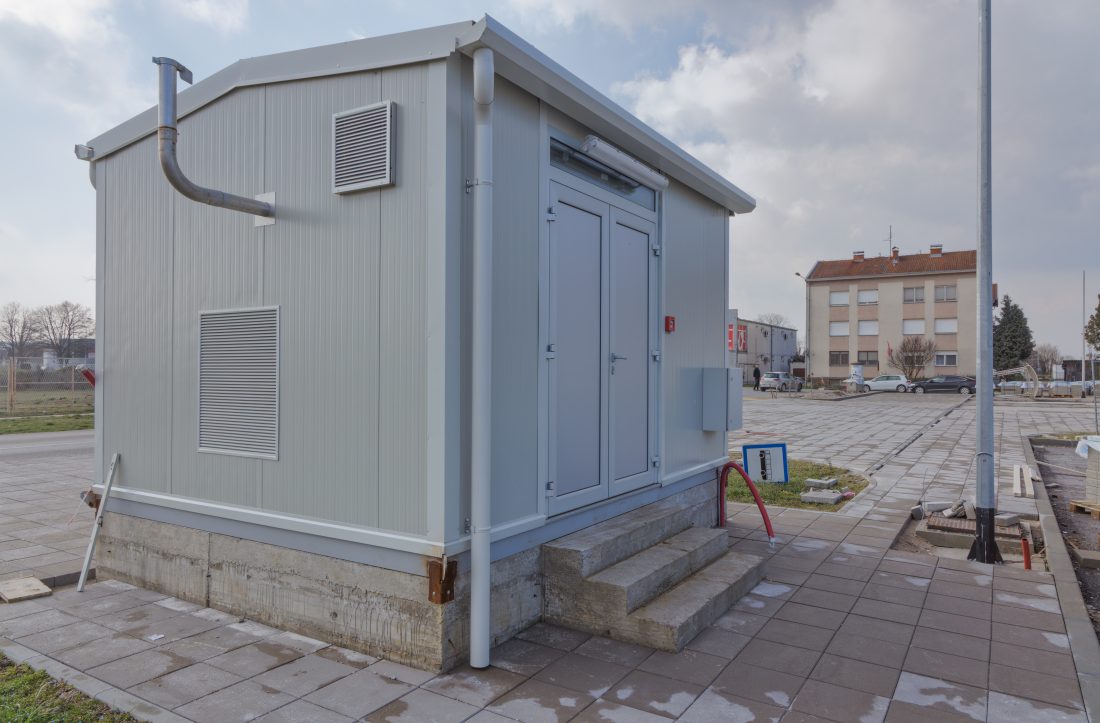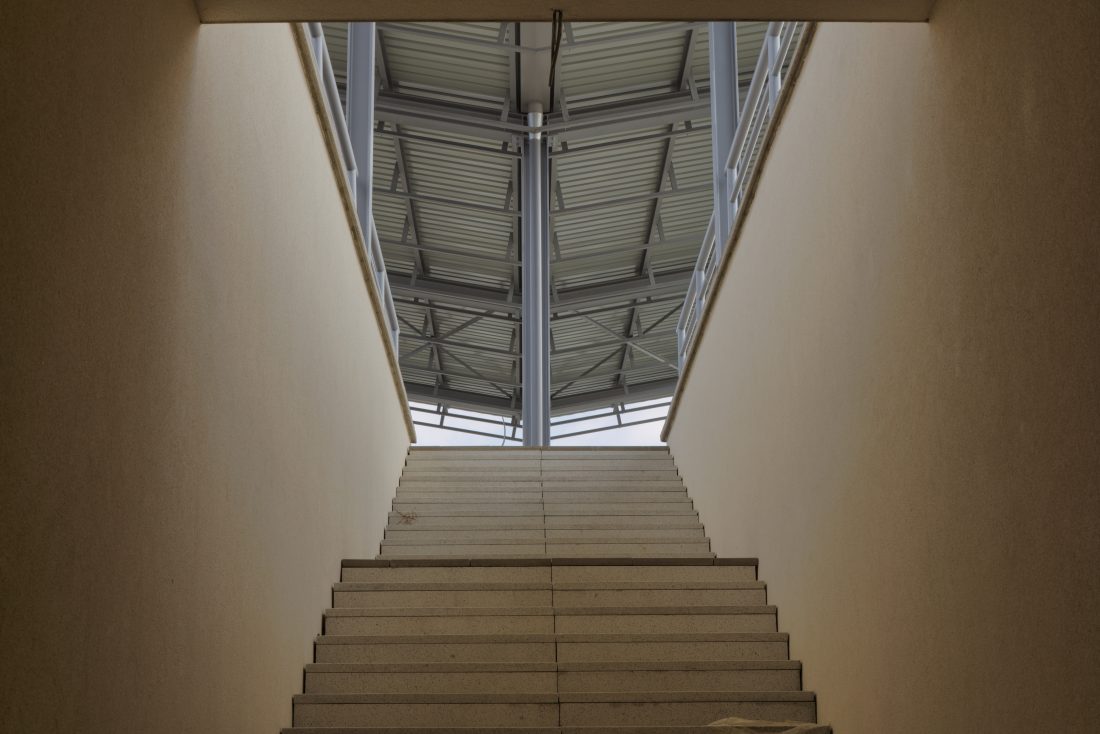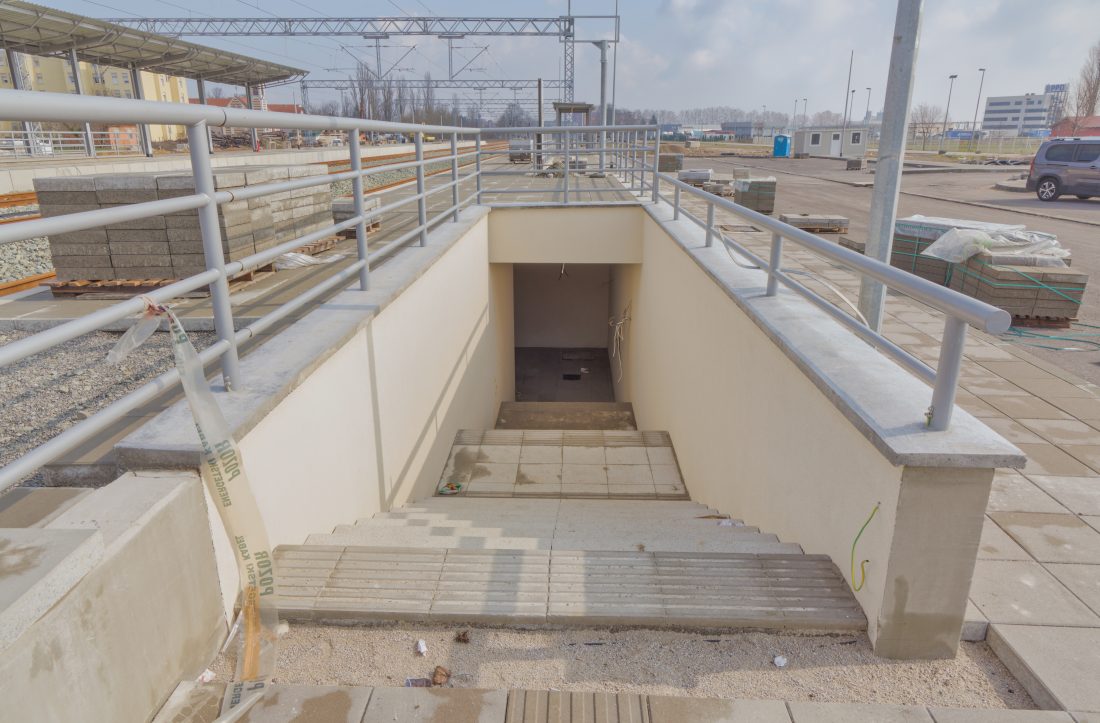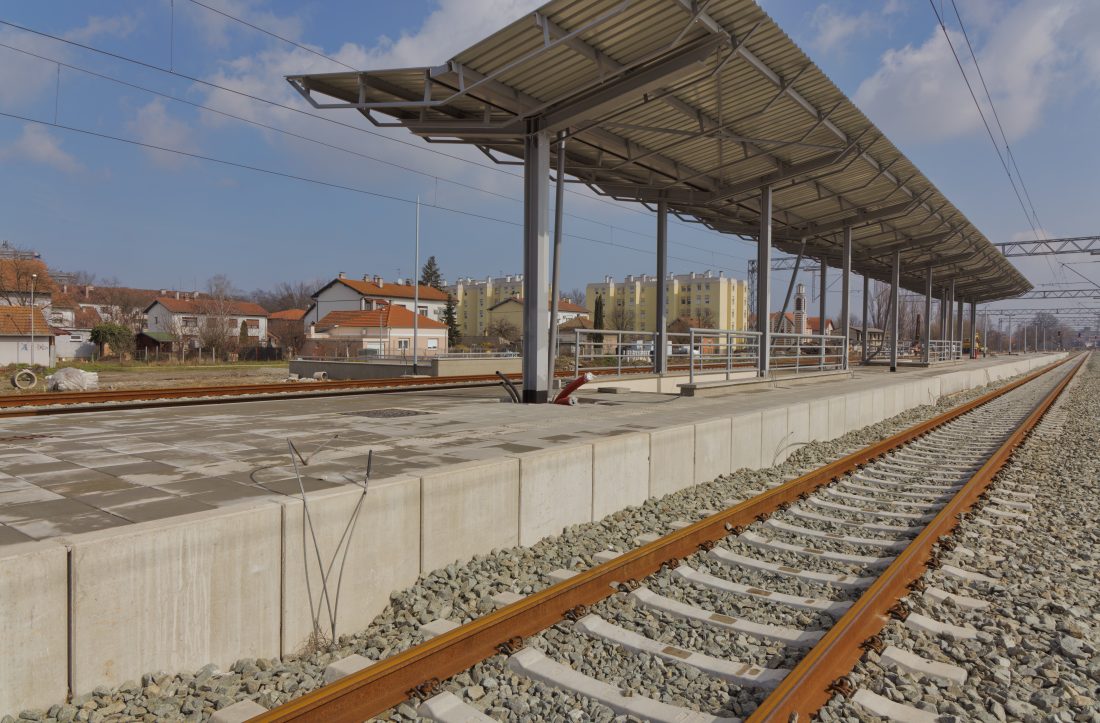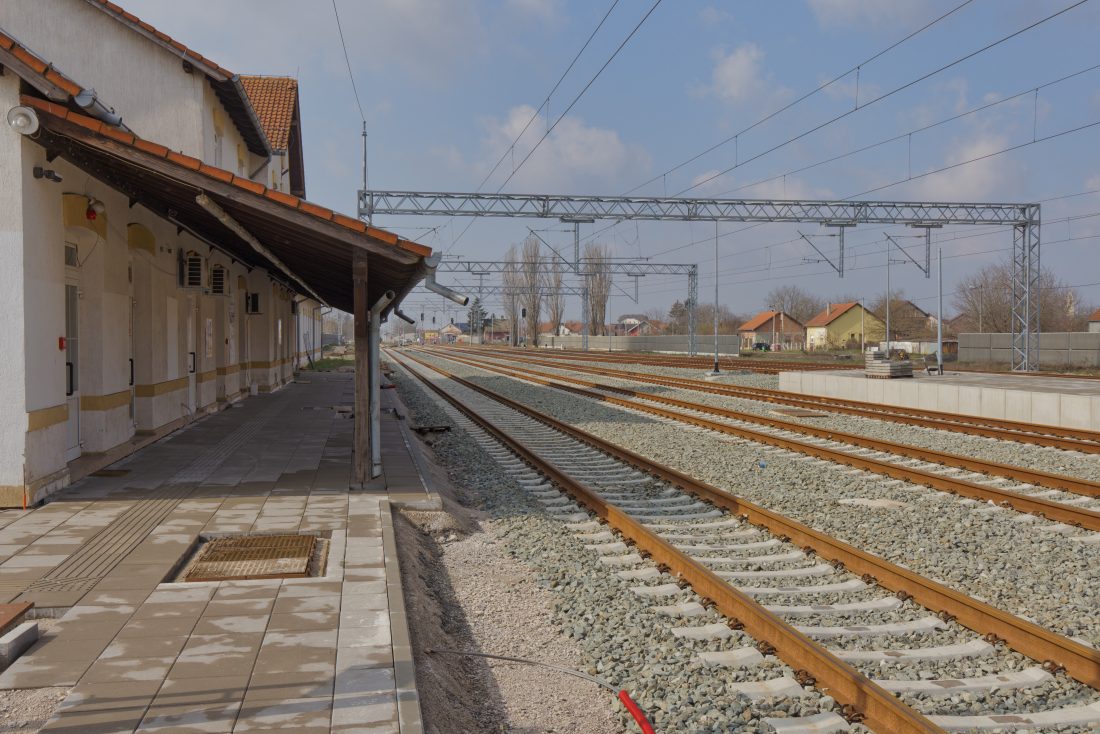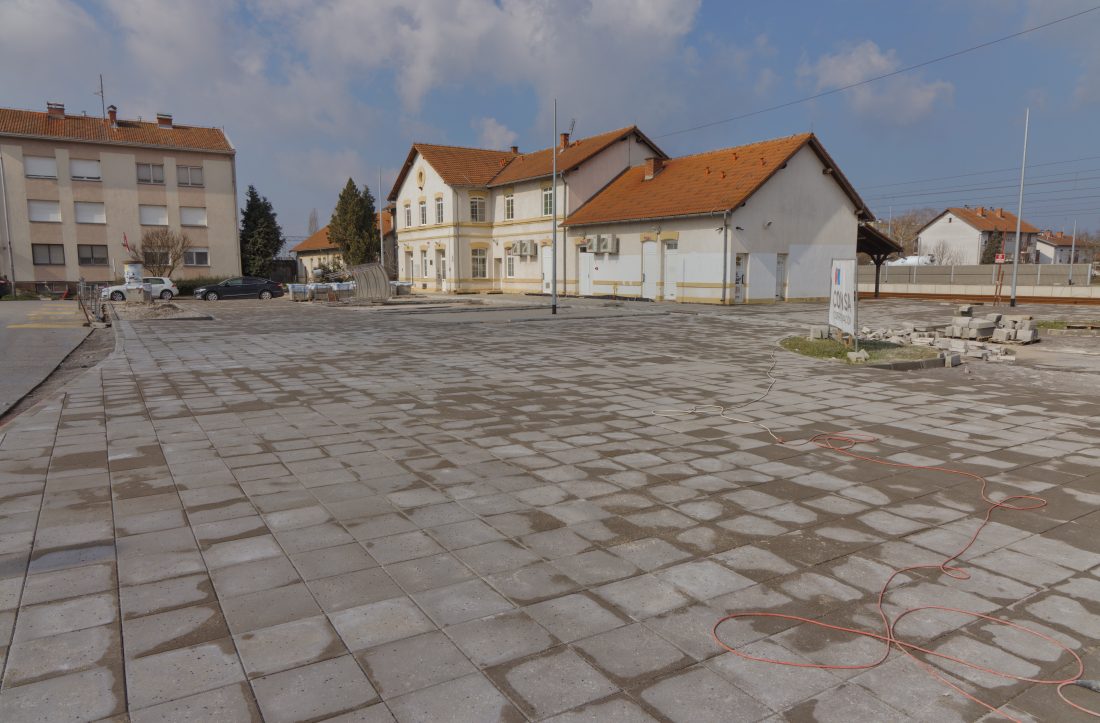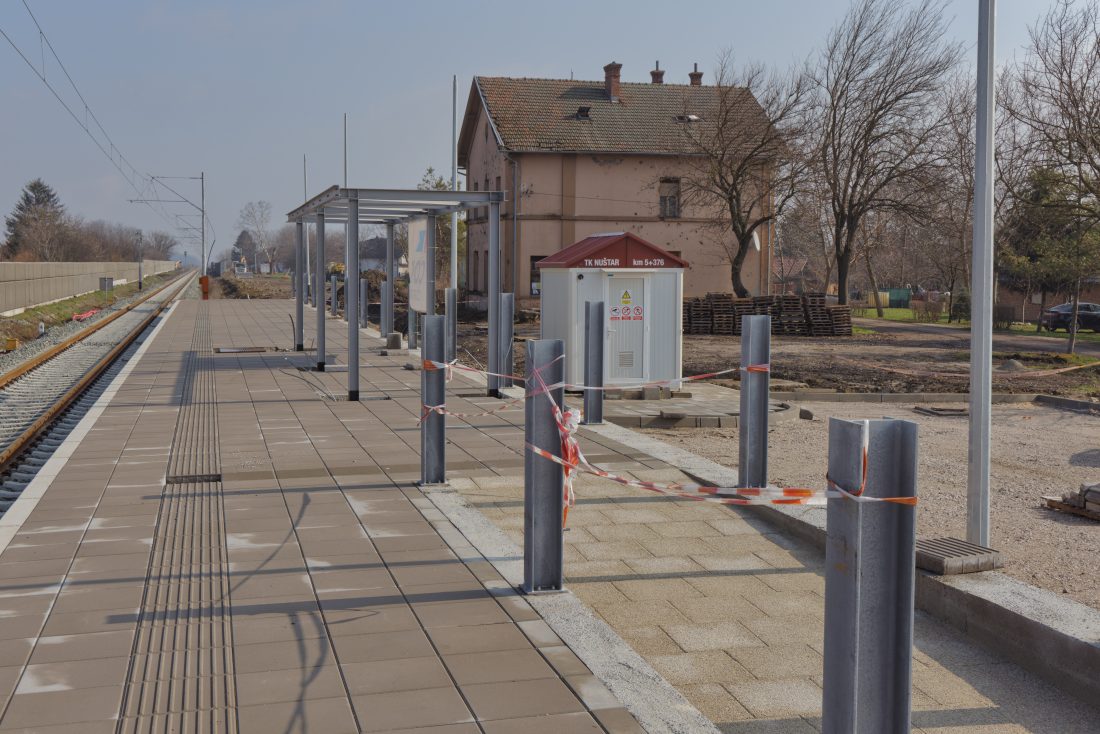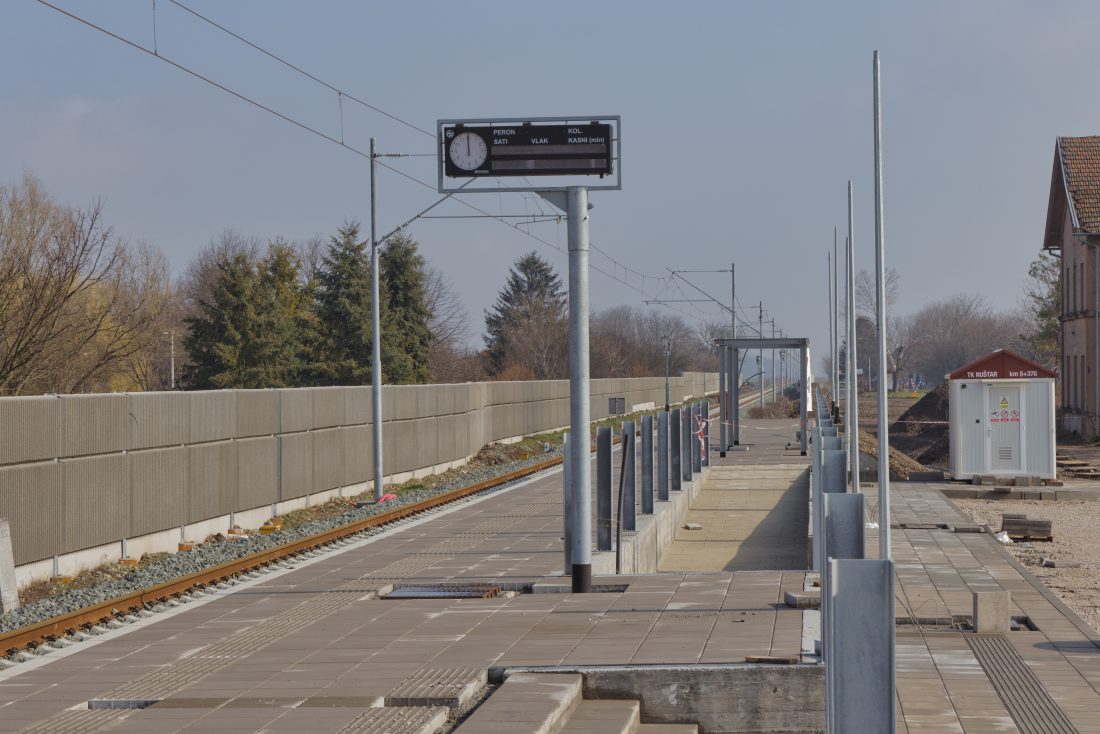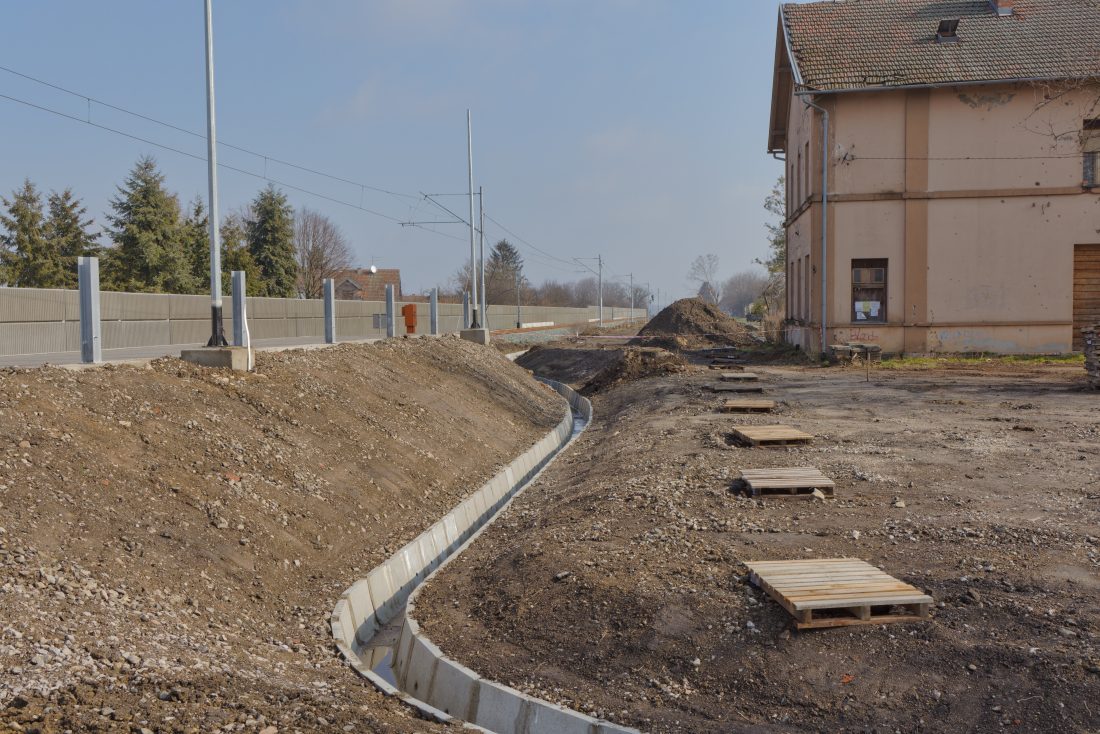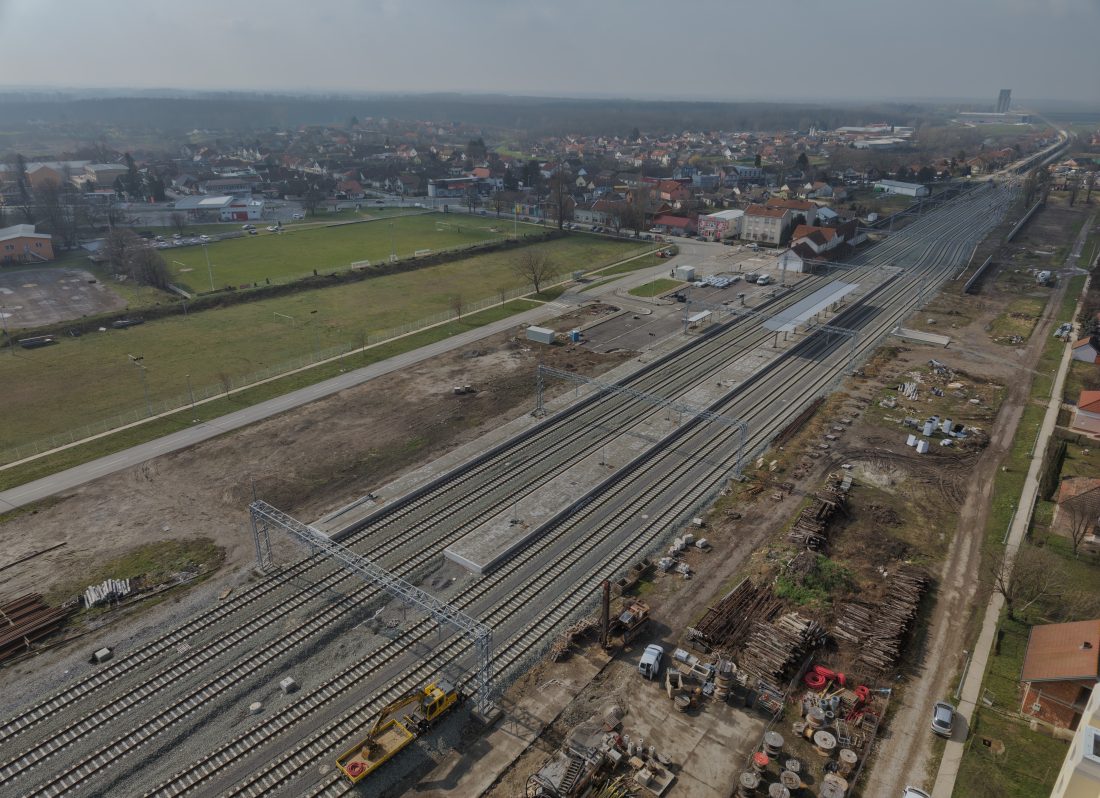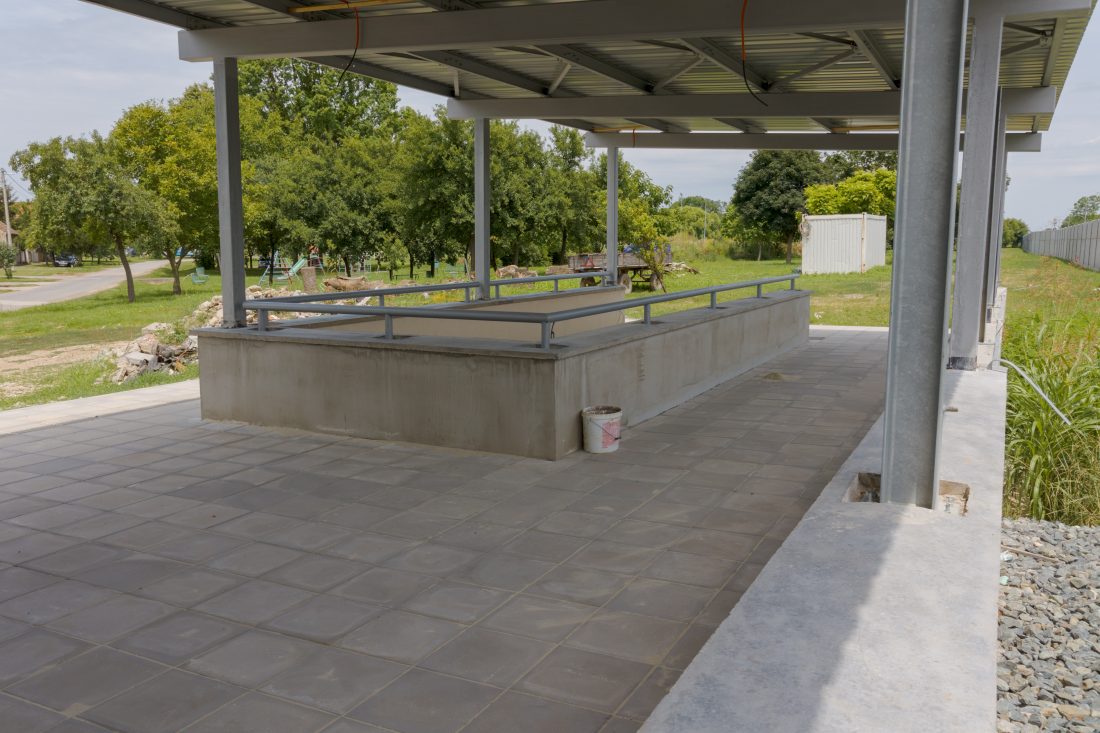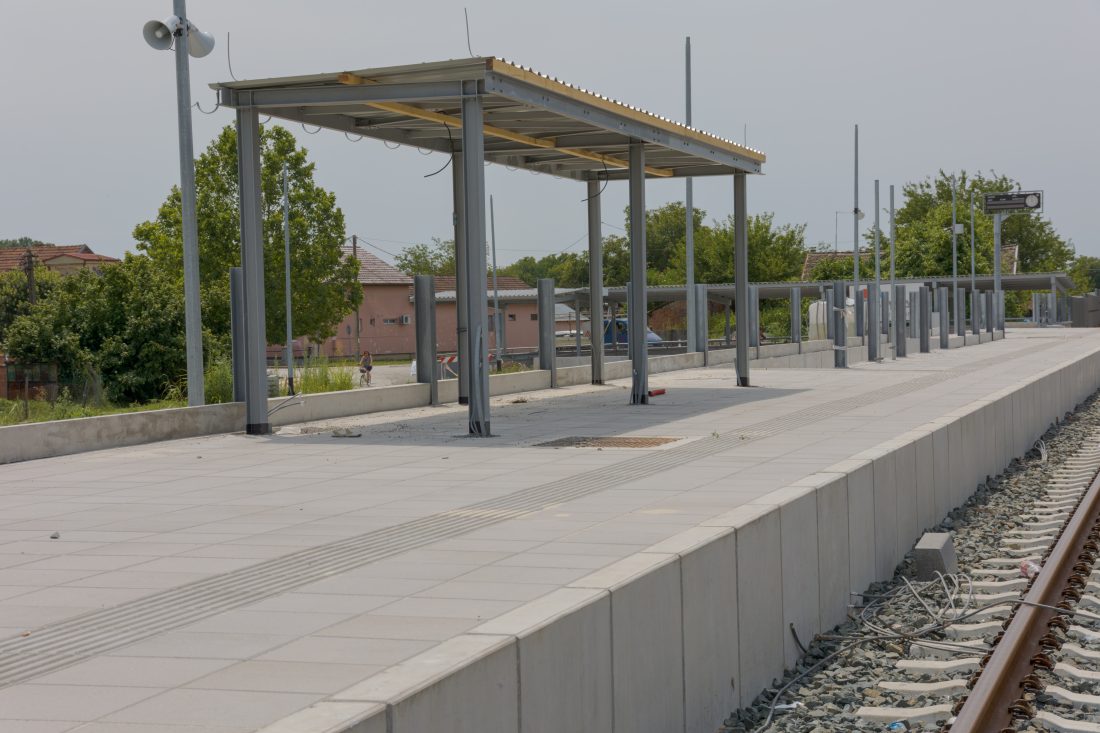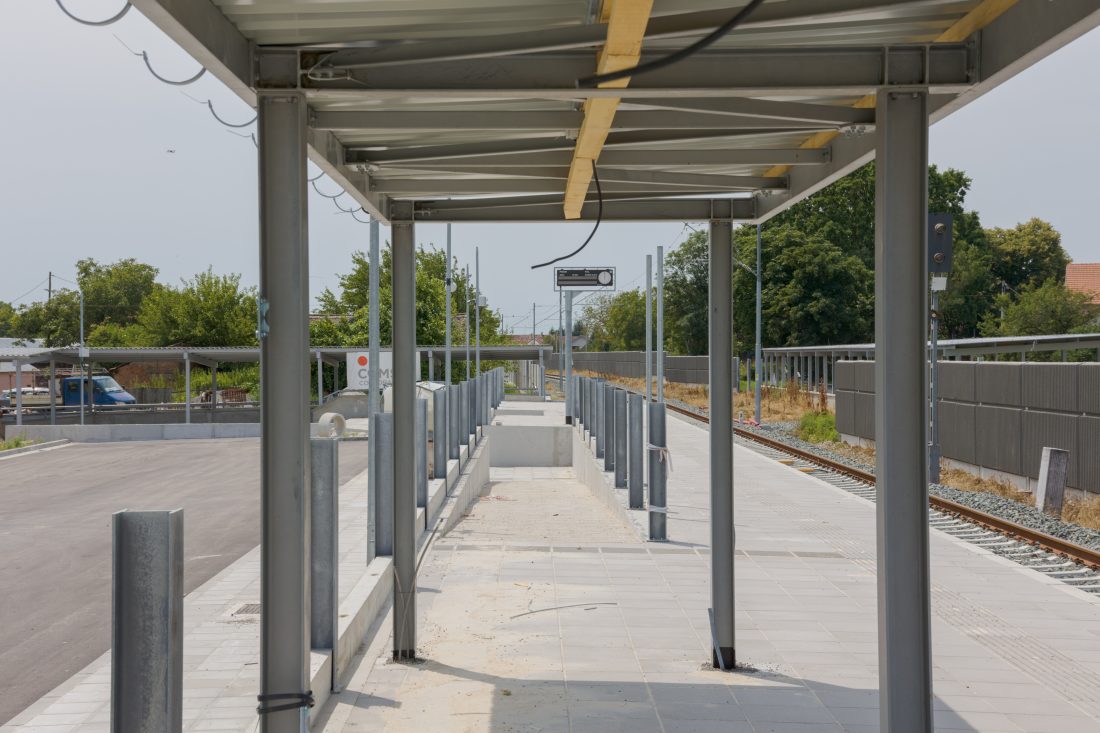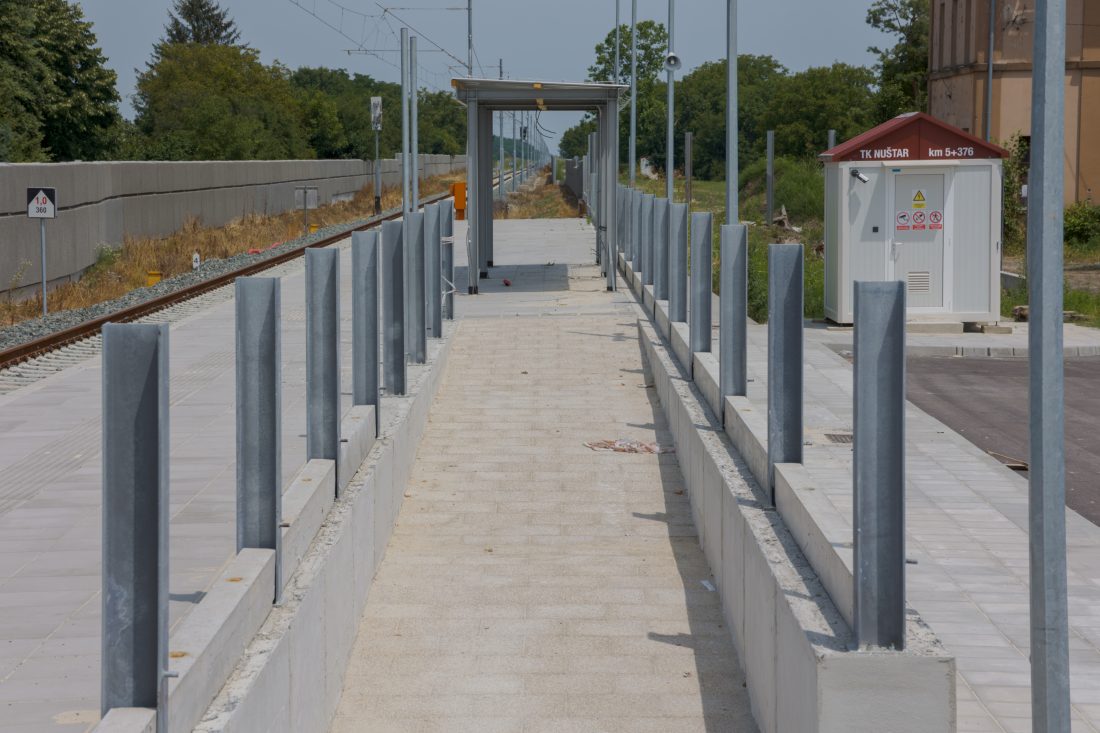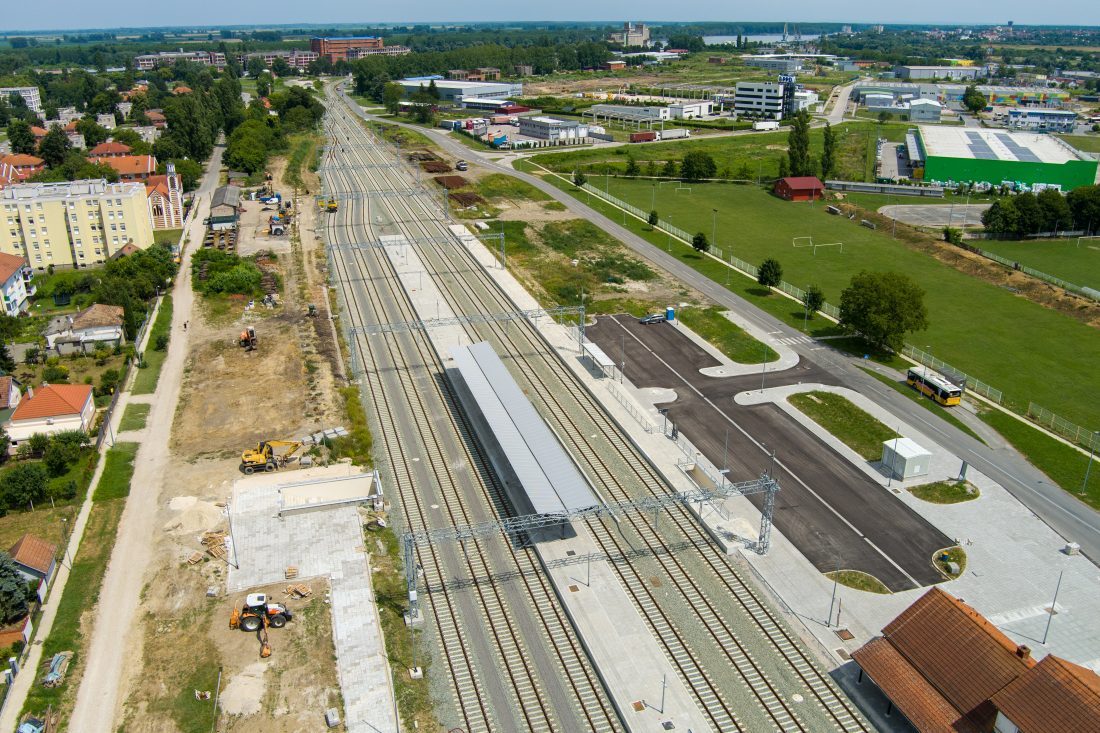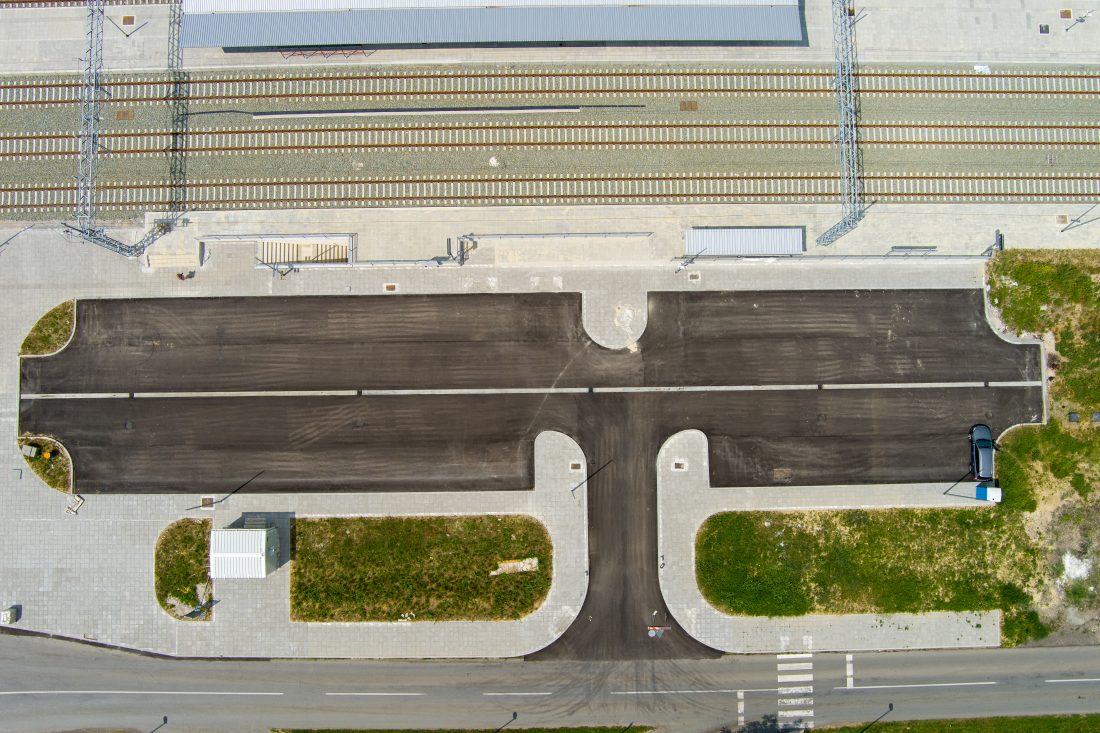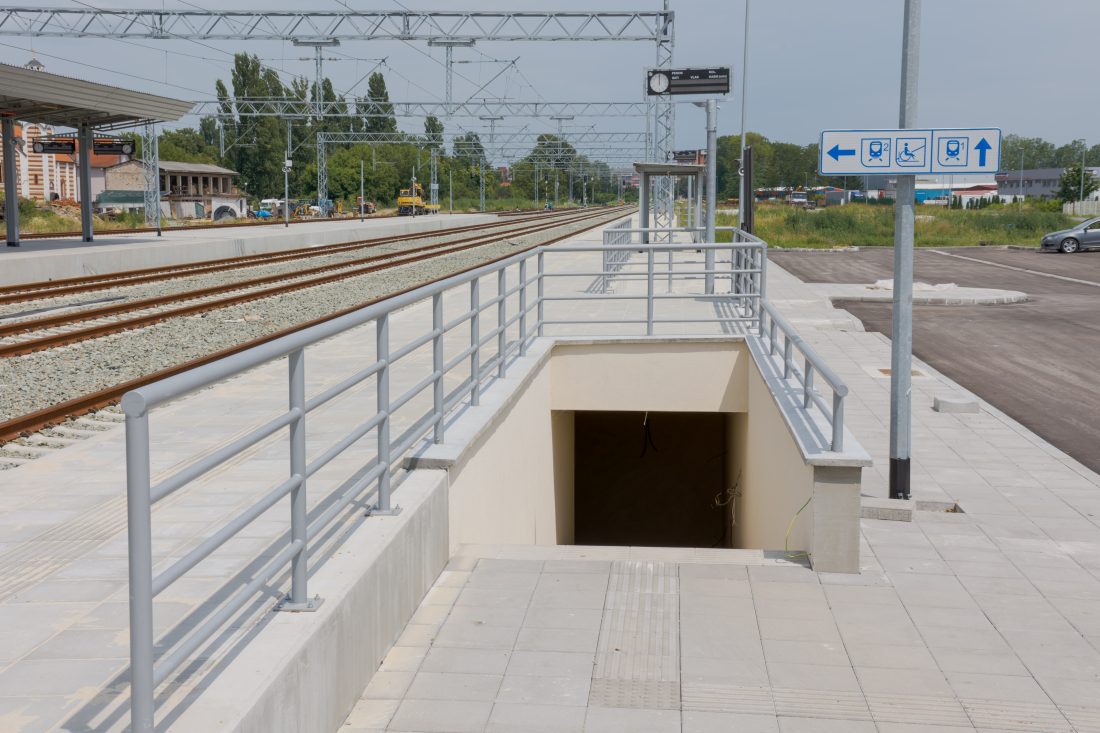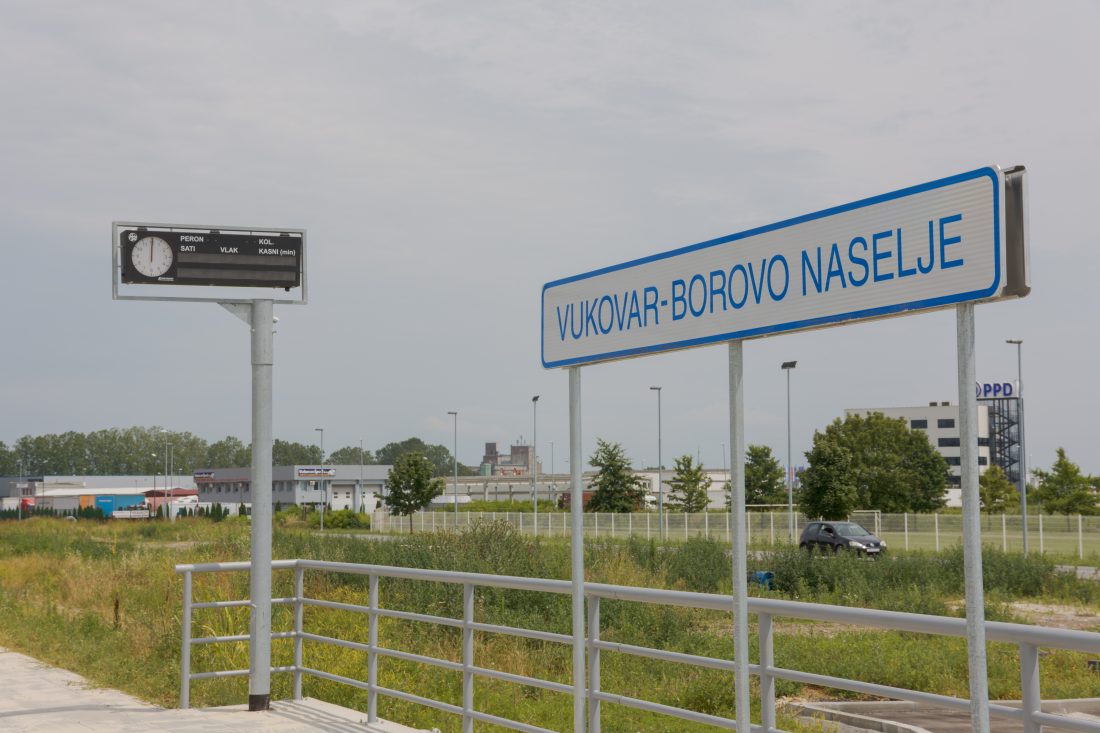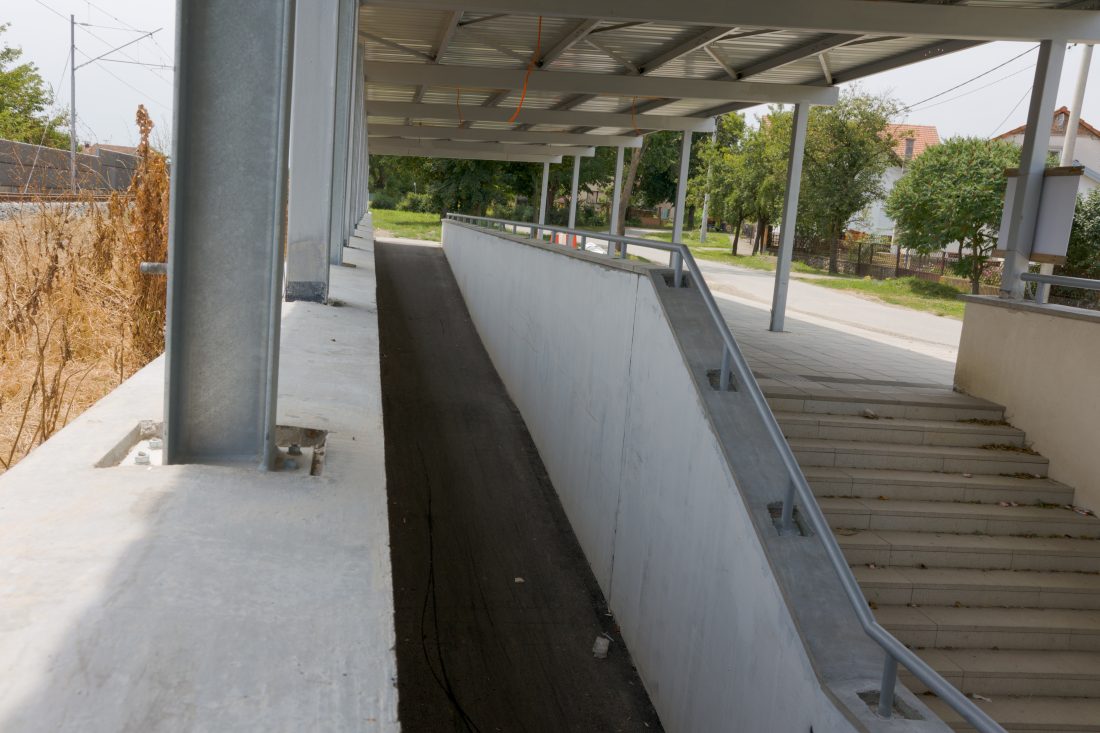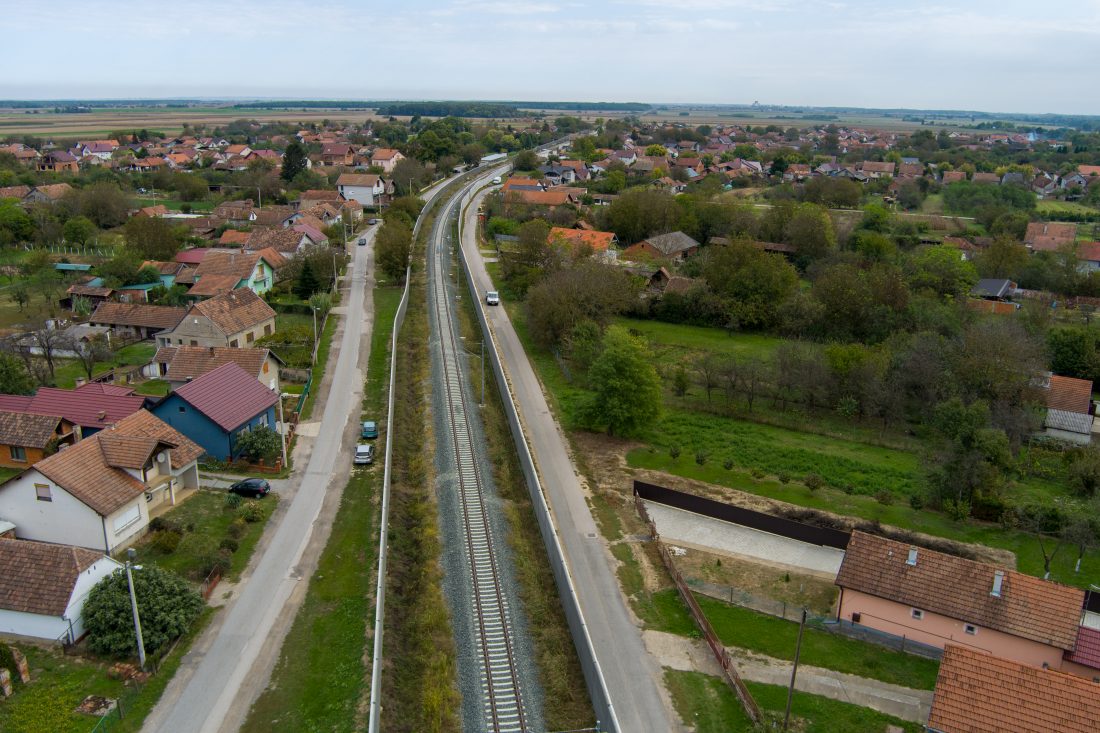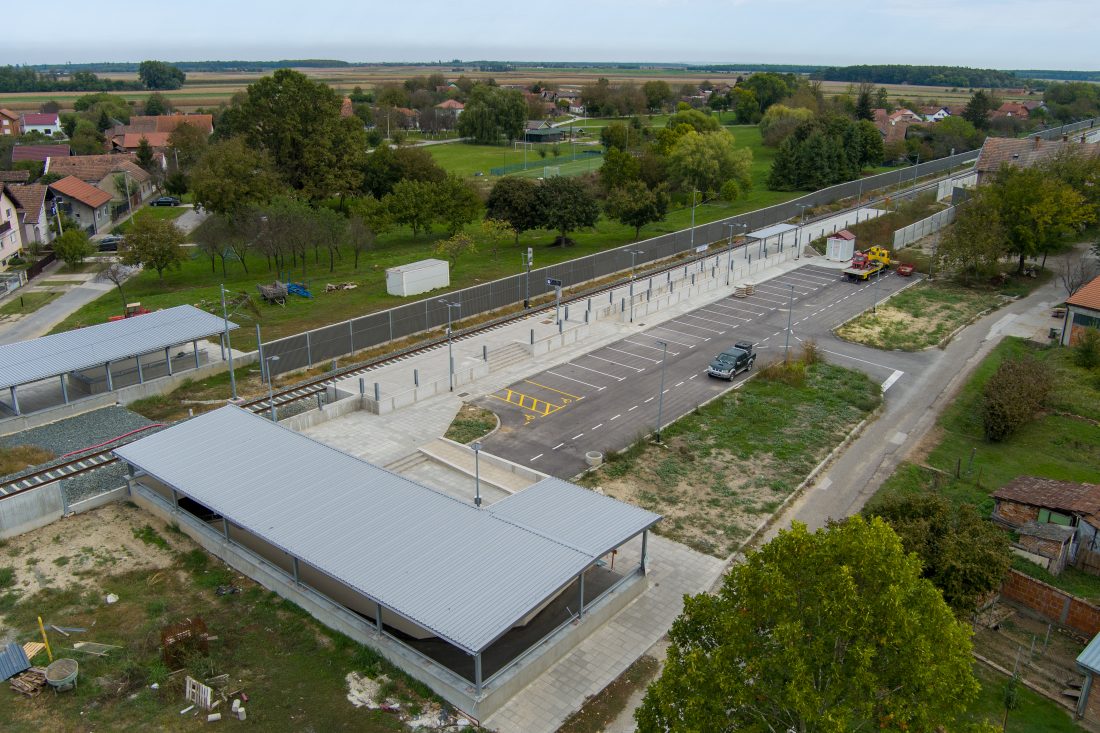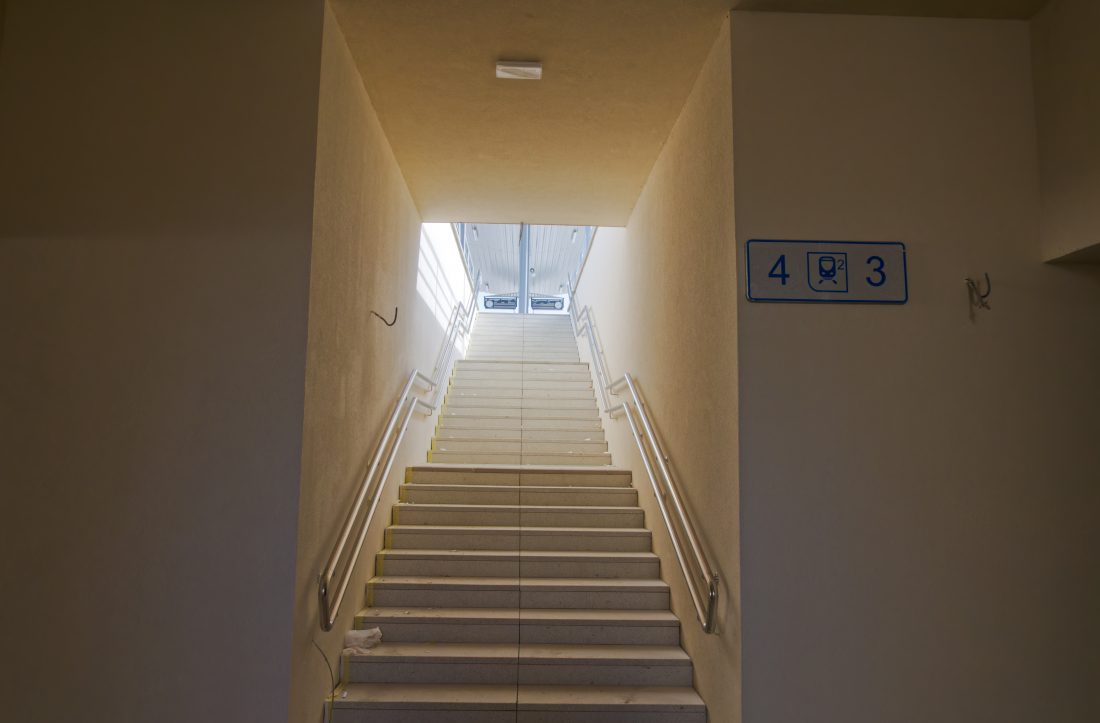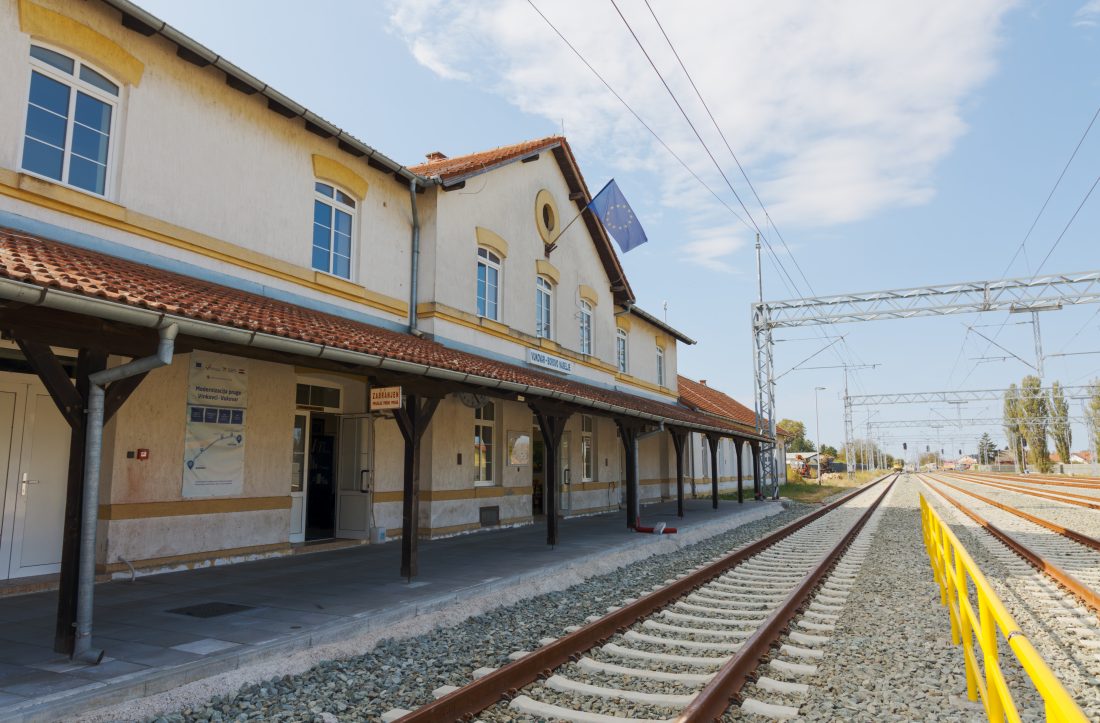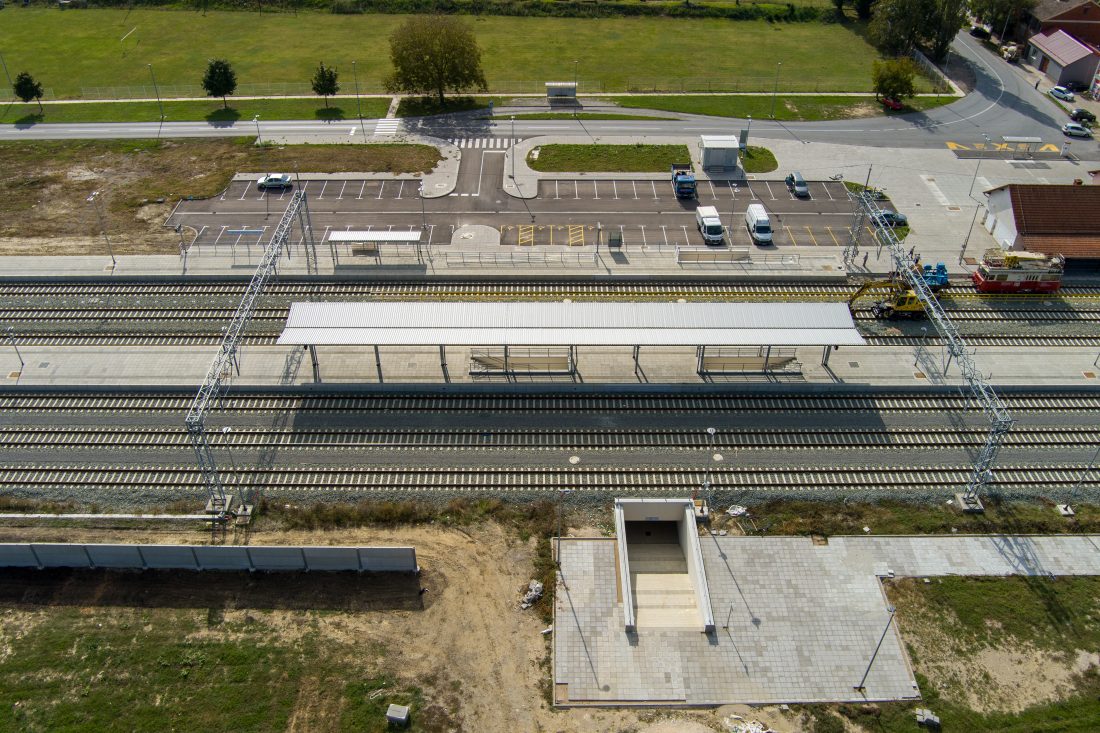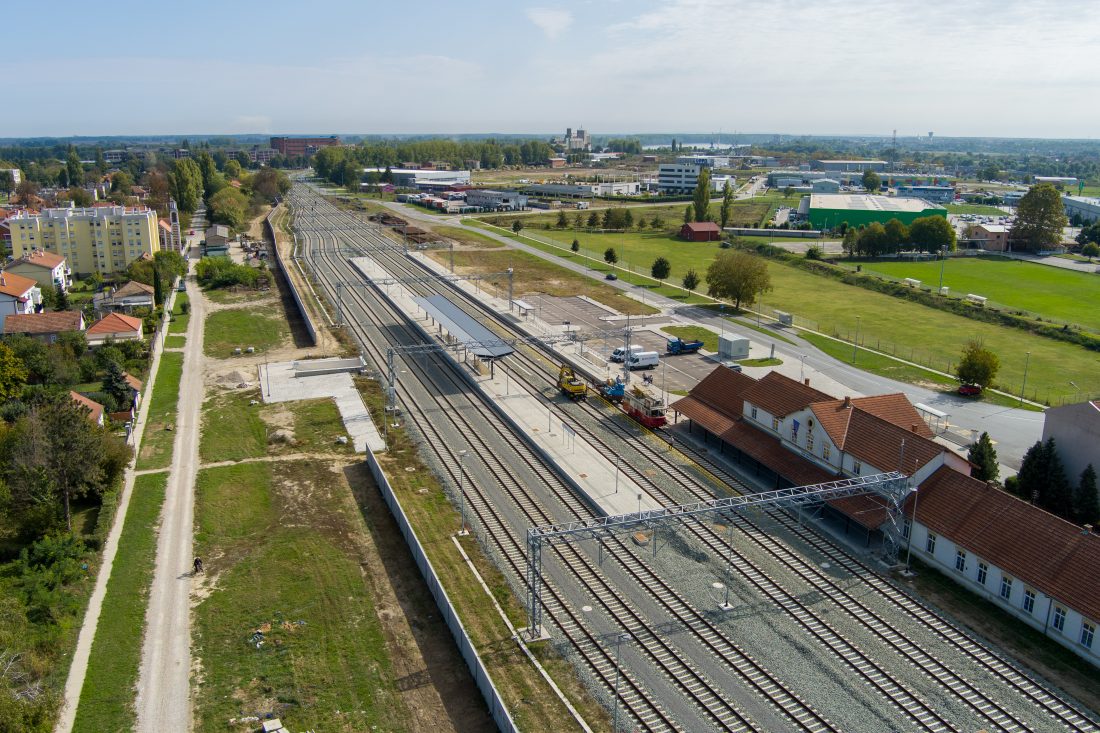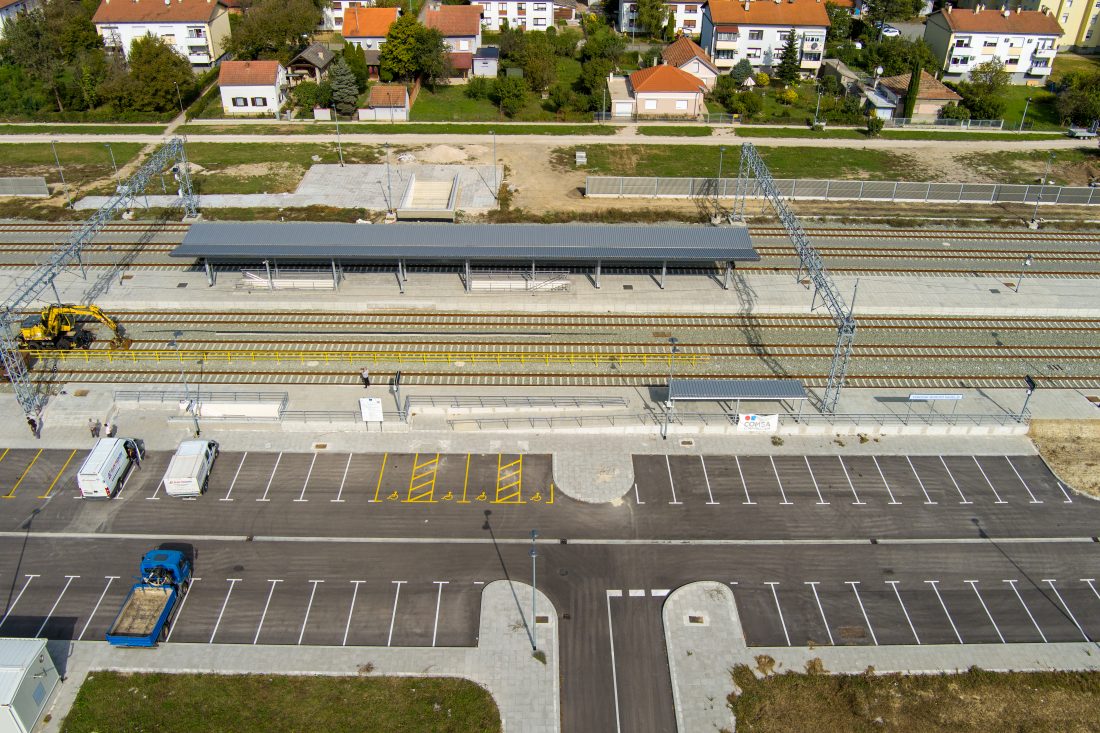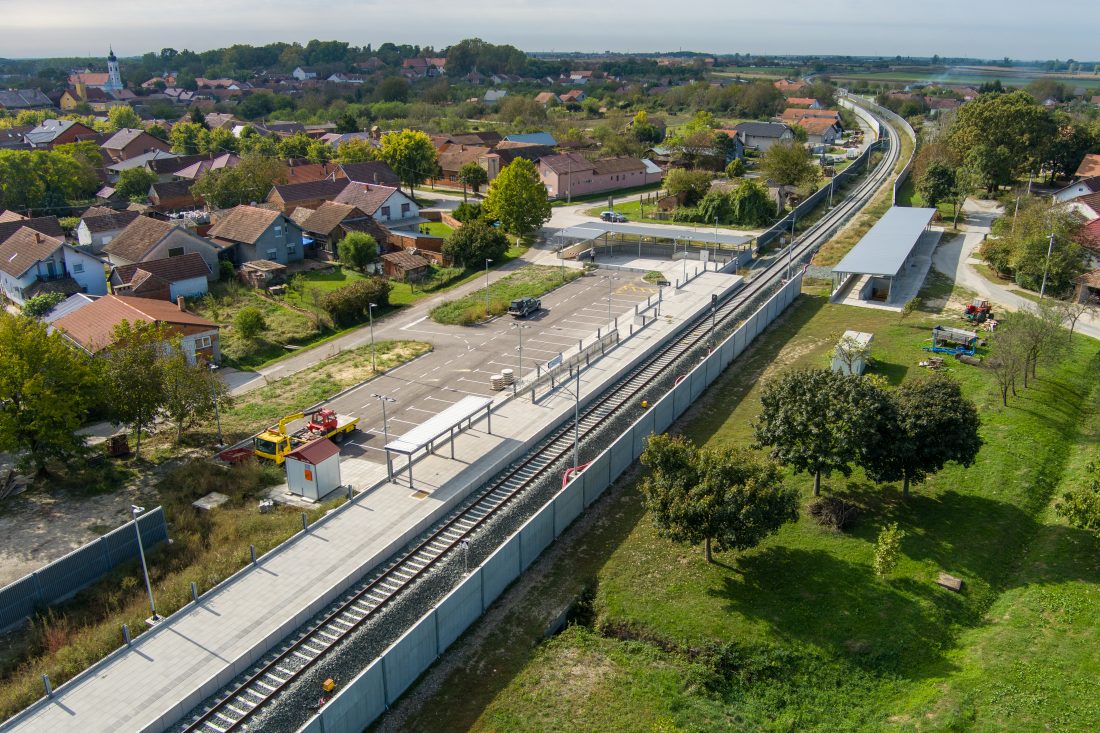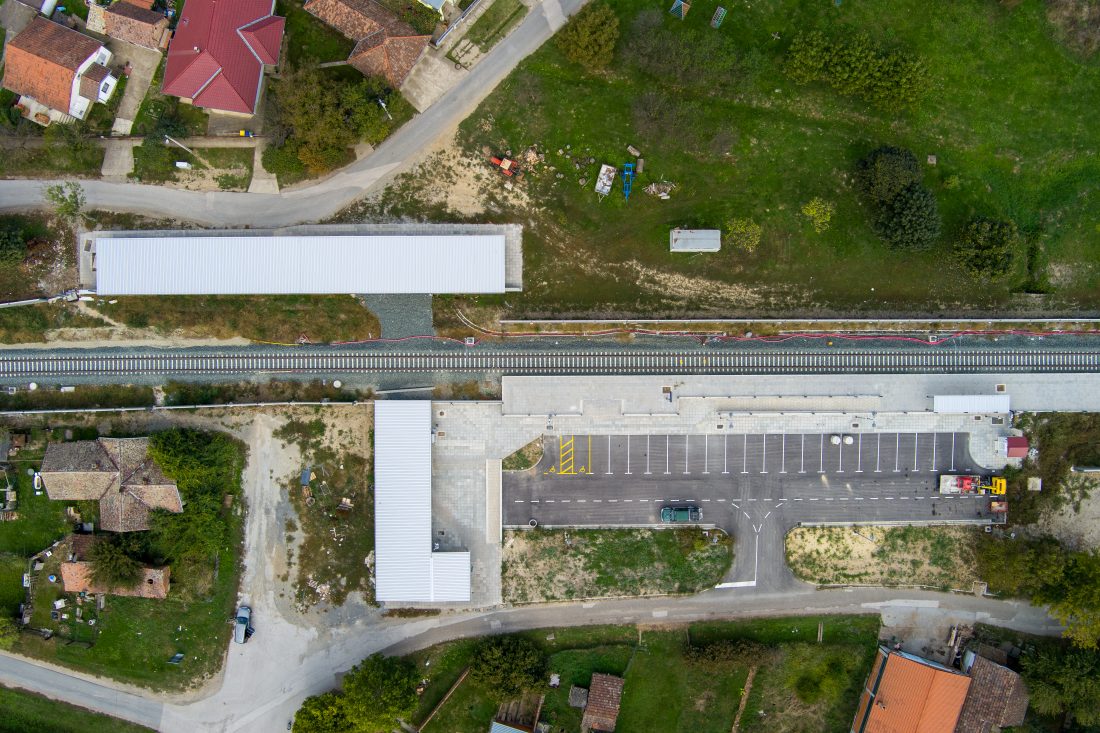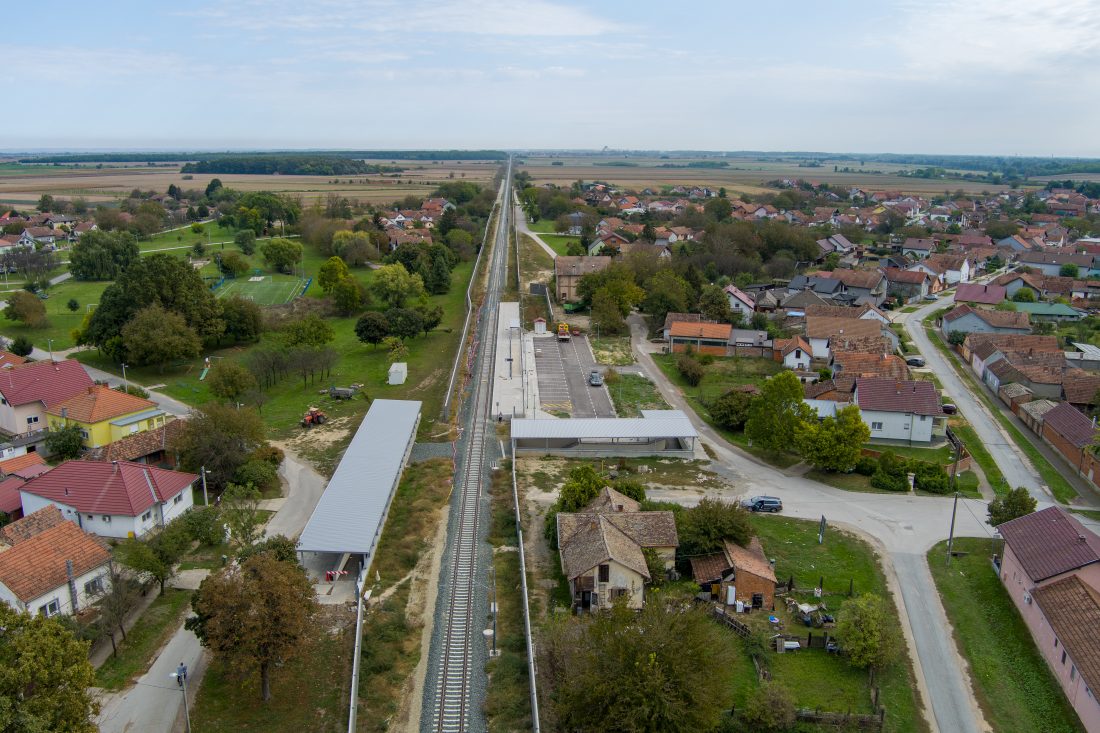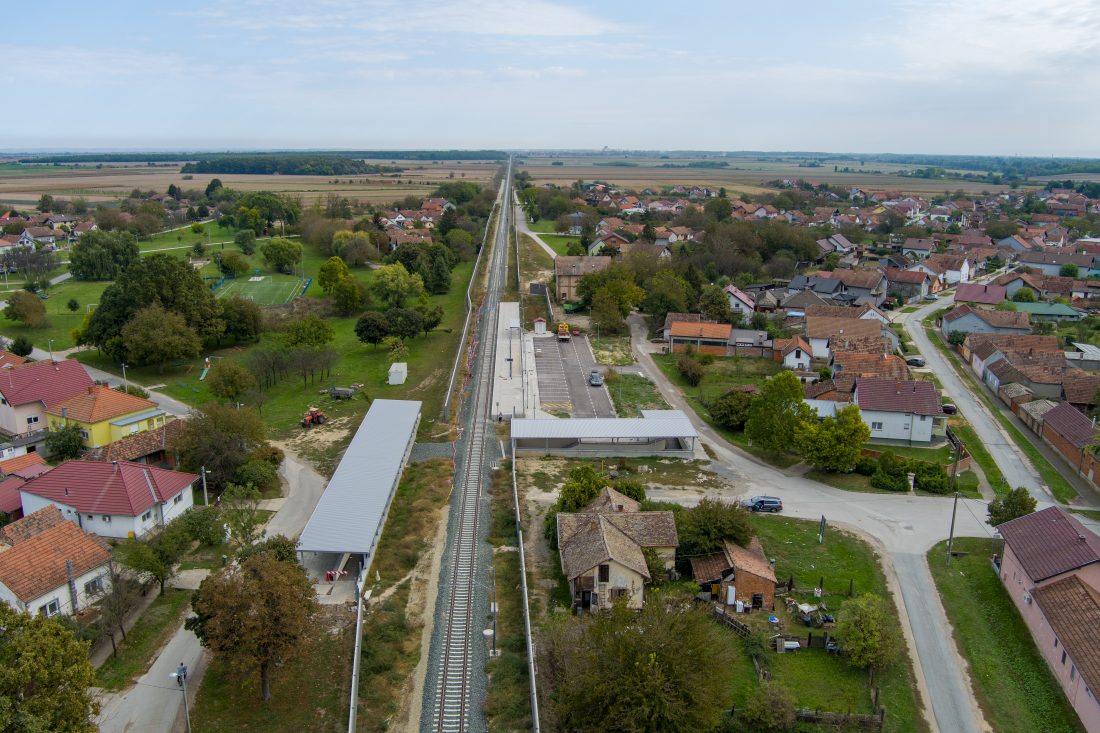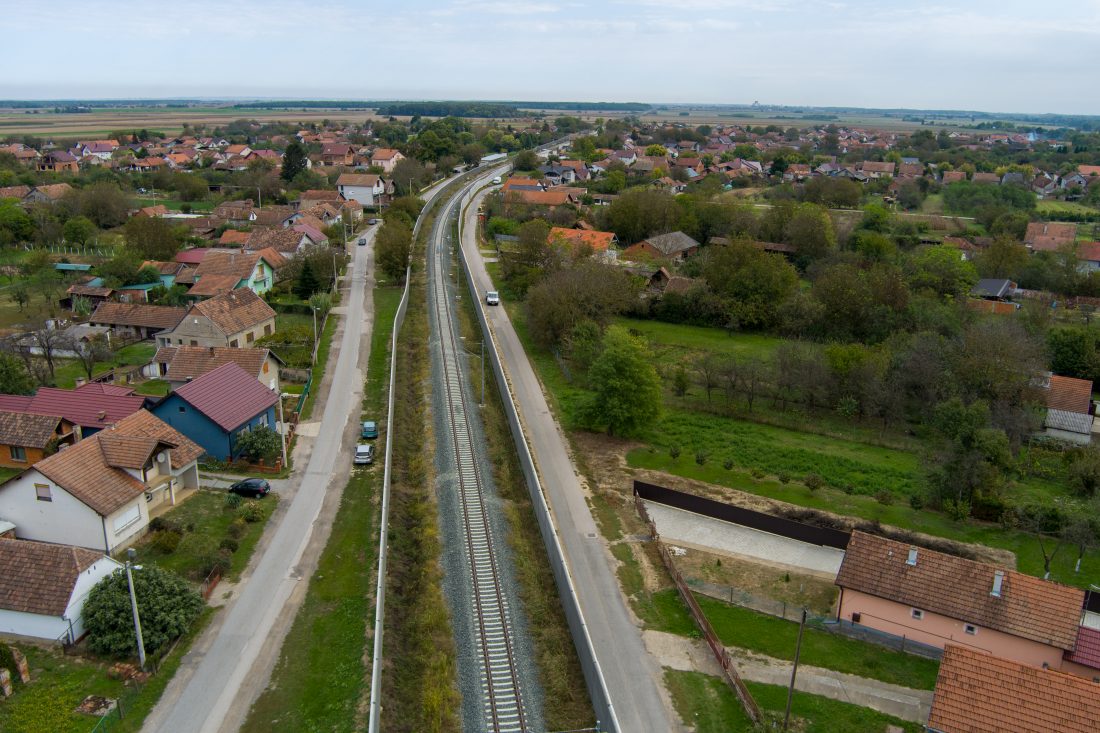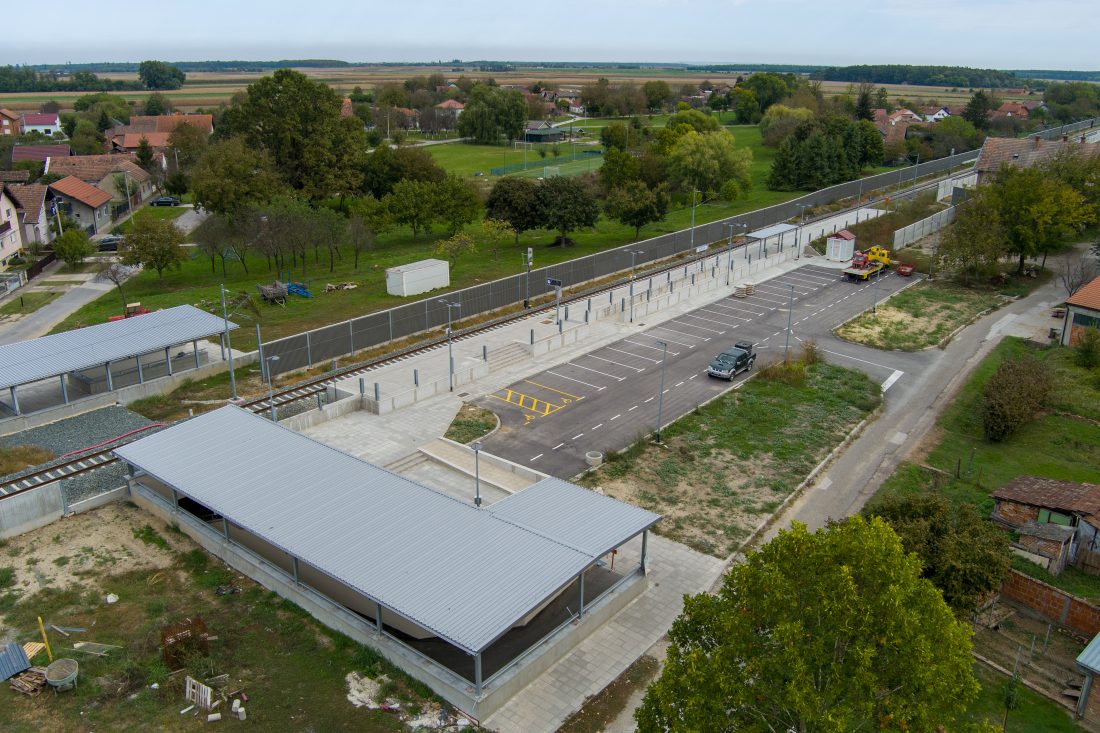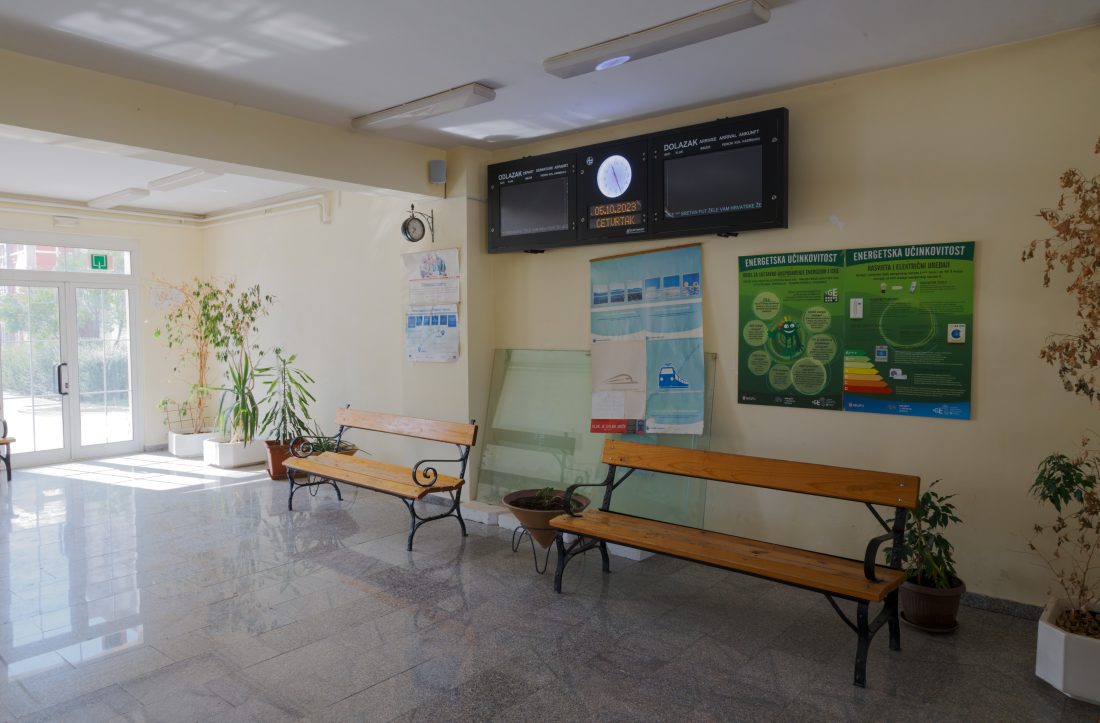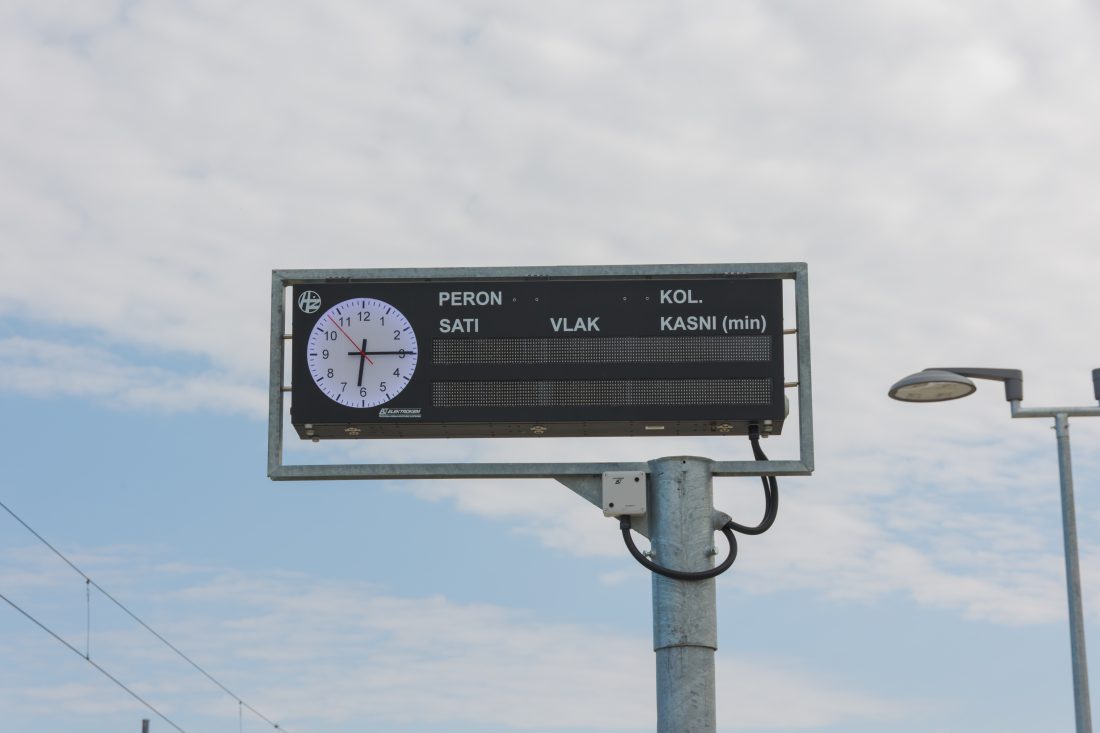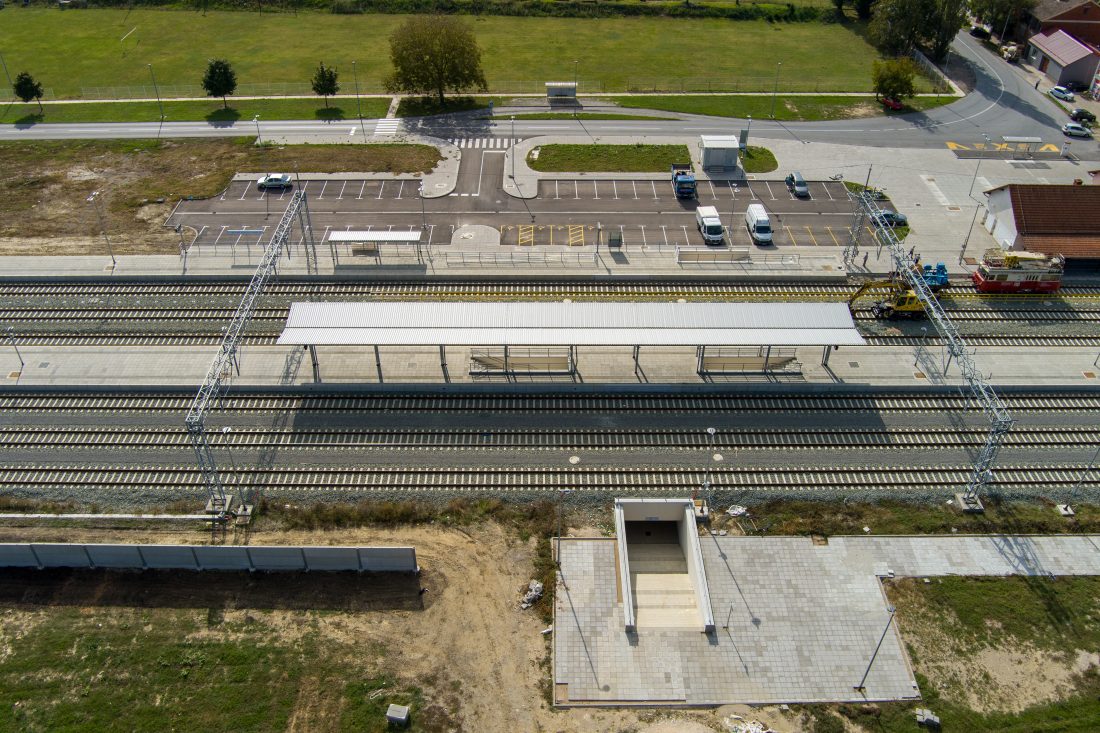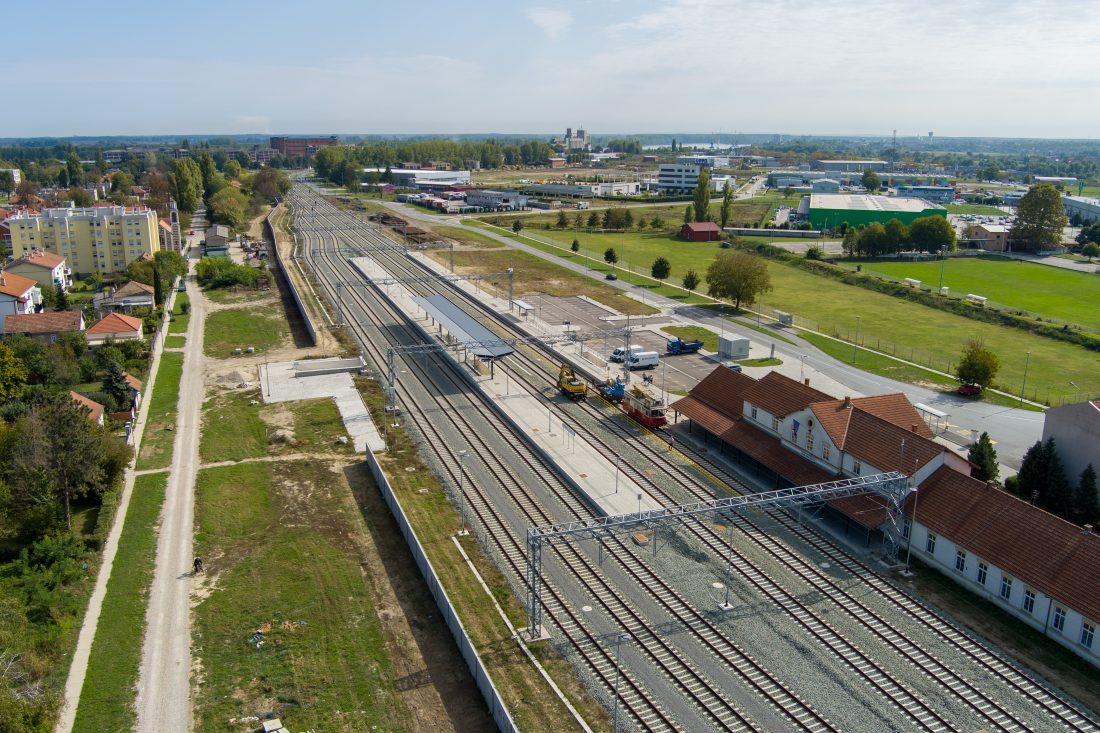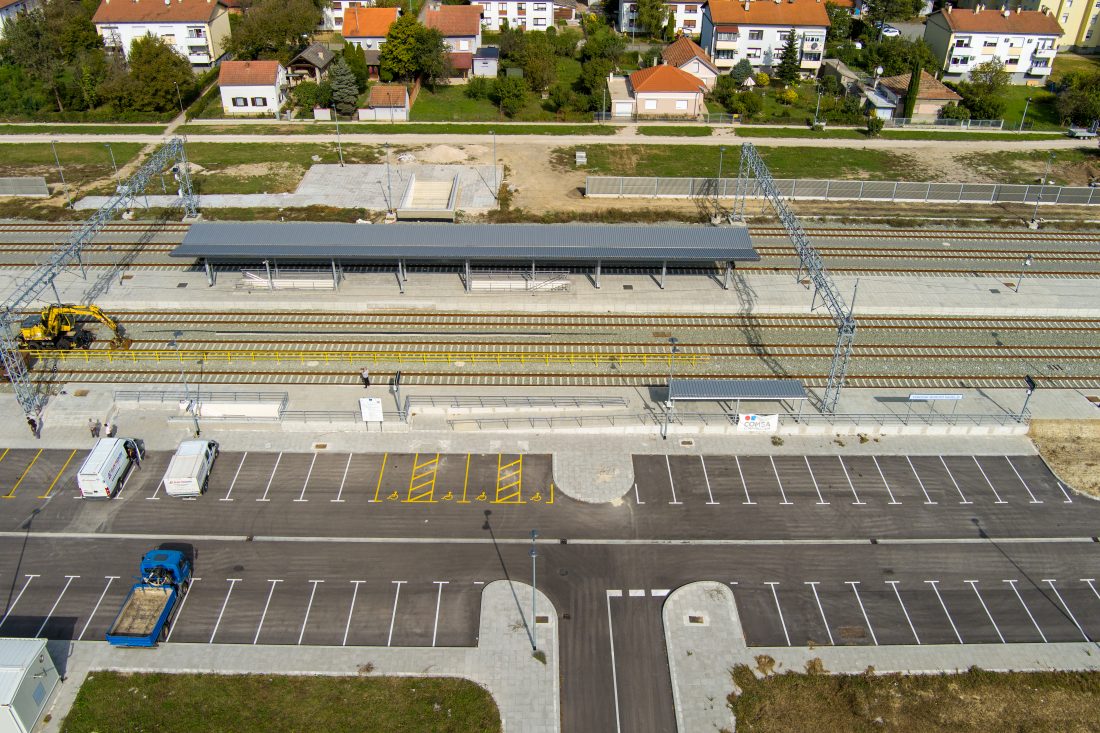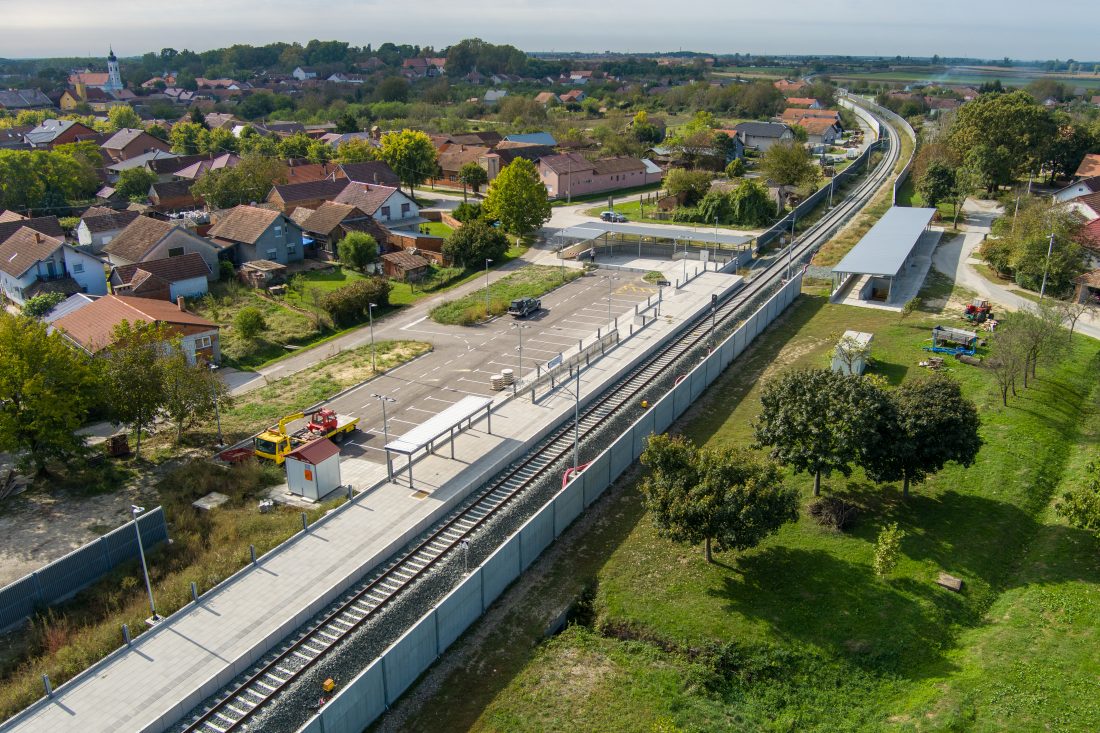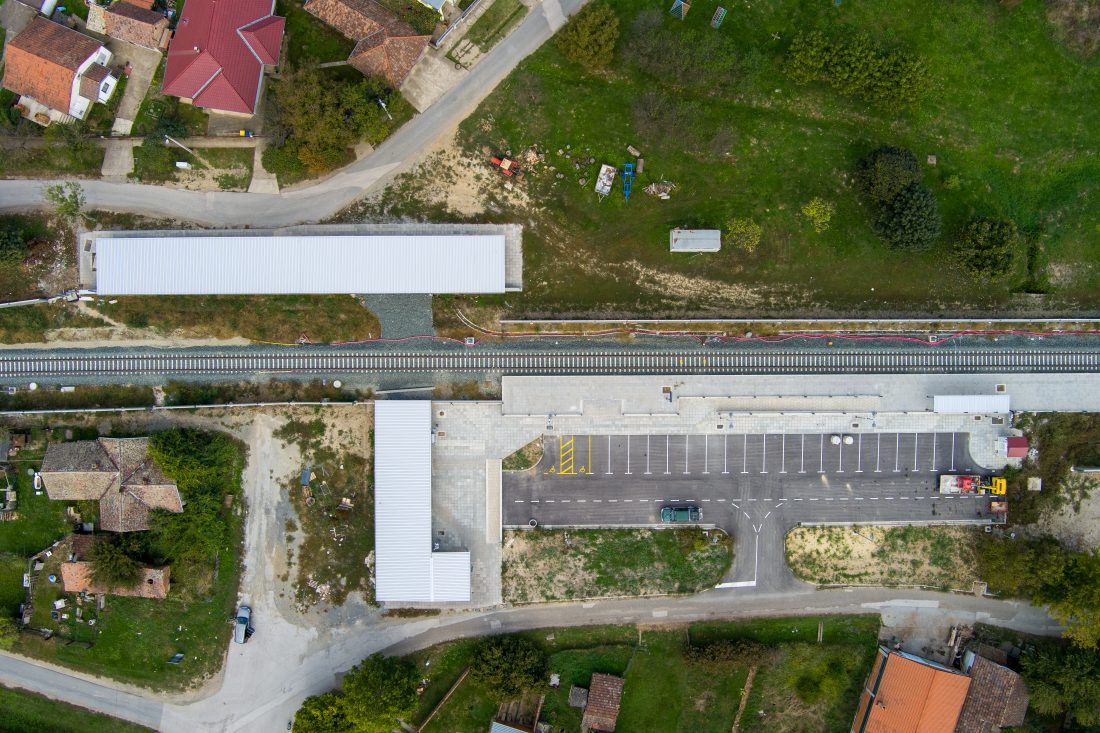Project summary
The project envisages the reconstruction and renovation of the entire 18,71 km long single-track railway line and reconstruction of pertaining stations and stops, electrification, elimination of existing, level rail-road crossings, which will be replaced by grade-separated crossings, and modernization of interlocking, signalling and telecommunication devices.
The reconstruction of individual horizontal arches and complete renovation of the rail superstructure and railway buildings will enable achieving the projected nominal speed of 120 km/h along most of the line.
The main objective of the project is to upgrade, electrify, reconstruct and renovate the existing single-track railway Vinkovci – Vukovar, reconstruct the railway stations Vukovar / Borovo Naselje and Vukovar, Nuštar and Bršadin-Lipovača stops and perform all necessary works on railway infrastructure subsystems (construction subsystem, control and signaling and safety subsystem, power subsystem). The current condition of the railway M601 Vinkovci – Vukovar, in terms of track geometry, signaling and safety devices, as well as the fact that it is not electrified, causes insufficient utilization of the railway.
The following activities are planned:
- Upgrade of the track superstructure that would enable the transport of vehicles of maximum weight (load model D4: 22.5 KN / a and 8.0 t / m) and future annual traffic;
- Modernization of stations and stops (tracks and platforms);
- Replacement of the steel bridge at km 14 + 484 and reconstruction of the concrete bridge at km 7 + 602 to enable the E5 load model (25 t / o and 8.8 t / m);
- Electrification of the railway (single-phase AC system 25 kV, 50Hz), upgrade of EVP Jankovci (installation of a new transformer for reactive energy compensation);
- Design of signaling and telecommunication system for future ETCS (ETMS L1) (enable sufficient number of channels, laying of optical cable for BTS connection, take into account power supply and room reservation for new system);
- Improve the routes of the existing railway line on sections that do not allow the designed speed (120 km / h);
- Improve the railway undercarriage on sections where necessary (sub-curtain, geotextile where necessary);
- Replace leaks and improve the drainage system; Modernization of station buildings and stops, including accesses and parking lots;
- Renovation and signaling (sound and light devices) – safety devices for level crossings.
The ultimate goals that will be achieved by this project are:
- improve accessibility;
- improve access to the port of Vukovar;
- improve interoperability (the project is designed with respect to TEN-T and interoperable standards);
- increase the capacity of the railway;
- improve energy efficiency;
- improve the environmental impact;
- improve the level of passenger services;
- improve intermodality (next to each station and stop there is a parking lot for cars and bicycles, and there are bus stops nearby, on average at a distance of 500m);
- improve operational reliability;
- improve safety (the project includes safety elements in line with the EU Railway Safety Directive).
Objective of the project
The objective of the project includes the reconstruction of 18.71 km of track, electrification, reinforcement for the traffic of trains weighing 22.5 t / o, equipping with SS and TK devices, reconstruction of stations and stops, and solving LCP by securing and reducing.
The general objective of the project is to ensure efficient and reliable railway connection between the Port of Vukovar, the main port for inland navigation in the Republic of Croatia and its hinterland. The project is in line with EU priorities for promoting sustainable freight transport dominated by inland waterways and rail. Demand for freight transport in the port of Vukovar has been growing in recent years, and if this growth trend continues to develop, the project will, in combination with other measures, enable a modal transition from road to rail.
The project will contribute to achieving the following goals:
- improve the accessibility of the port of Vukovar and its connection with the hinterland;
- promote a modal shift from road to more environmentally friendly modes of transport;
- improve the operational reliability of the railway;
- increase the capacity of the railway;
- improve traffic safety on the route by installing modern signaling and telecommunications systems (in accordance with the EU directive on railway safety);
- improve the environmental impact due to the partial shift of traffic from road to rail, as well as by reducing noise and vibration produced by the railway;
- improve the environmental sustainability and energy efficiency of the business due to the electrification of the line;
- improve line interoperability (the project is designed with TEN-T and interoperable standards in mind: electrification, increase of maximum load capacity, etc.);
- improve resilience to climate change; improve intermodality (parking for cars and bicycles is provided next to each station and stop, and there are bus stops nearby (on average at a distance of 500m)).
The project will reduce travel costs through:
- modal transition from road to rail, mainly freight, which improves the urban environment and overall energy efficiency in transport;
- reduction of operating and maintenance costs;
- improving security conditions; reduction of noise and CO2 emissions from traffic; reduction of travel time – for passenger trains from 40 min to 20 min, for freight trains from 50 min to 30 min; improving the connectivity and accessibility of the port of Vukovar.





